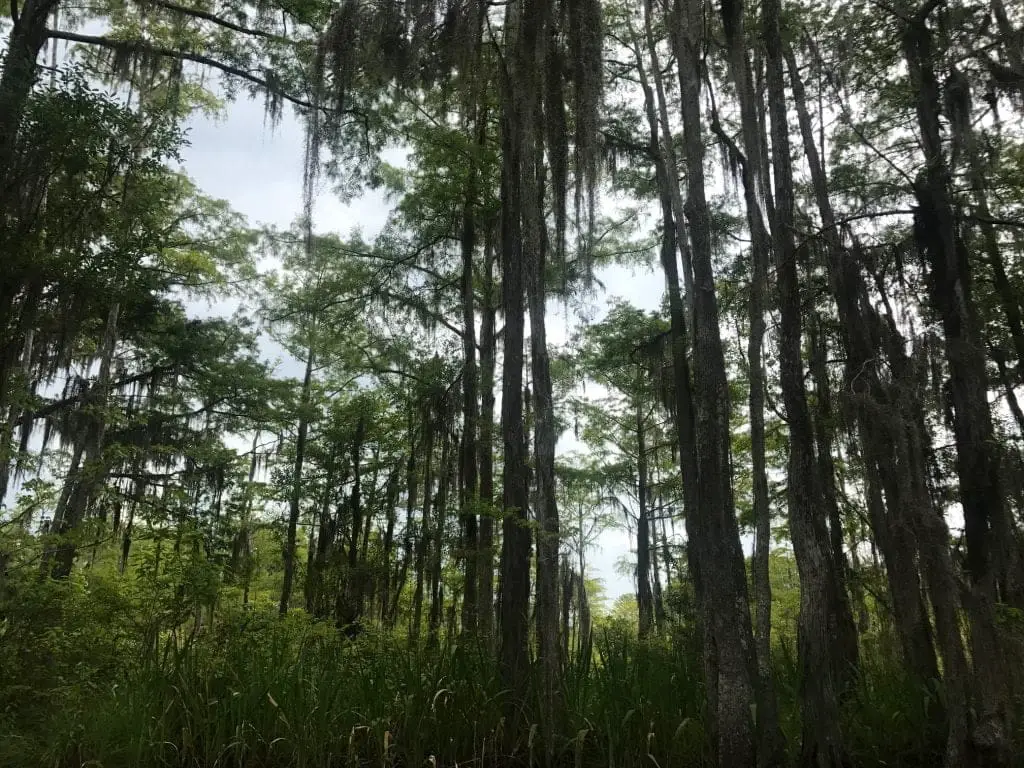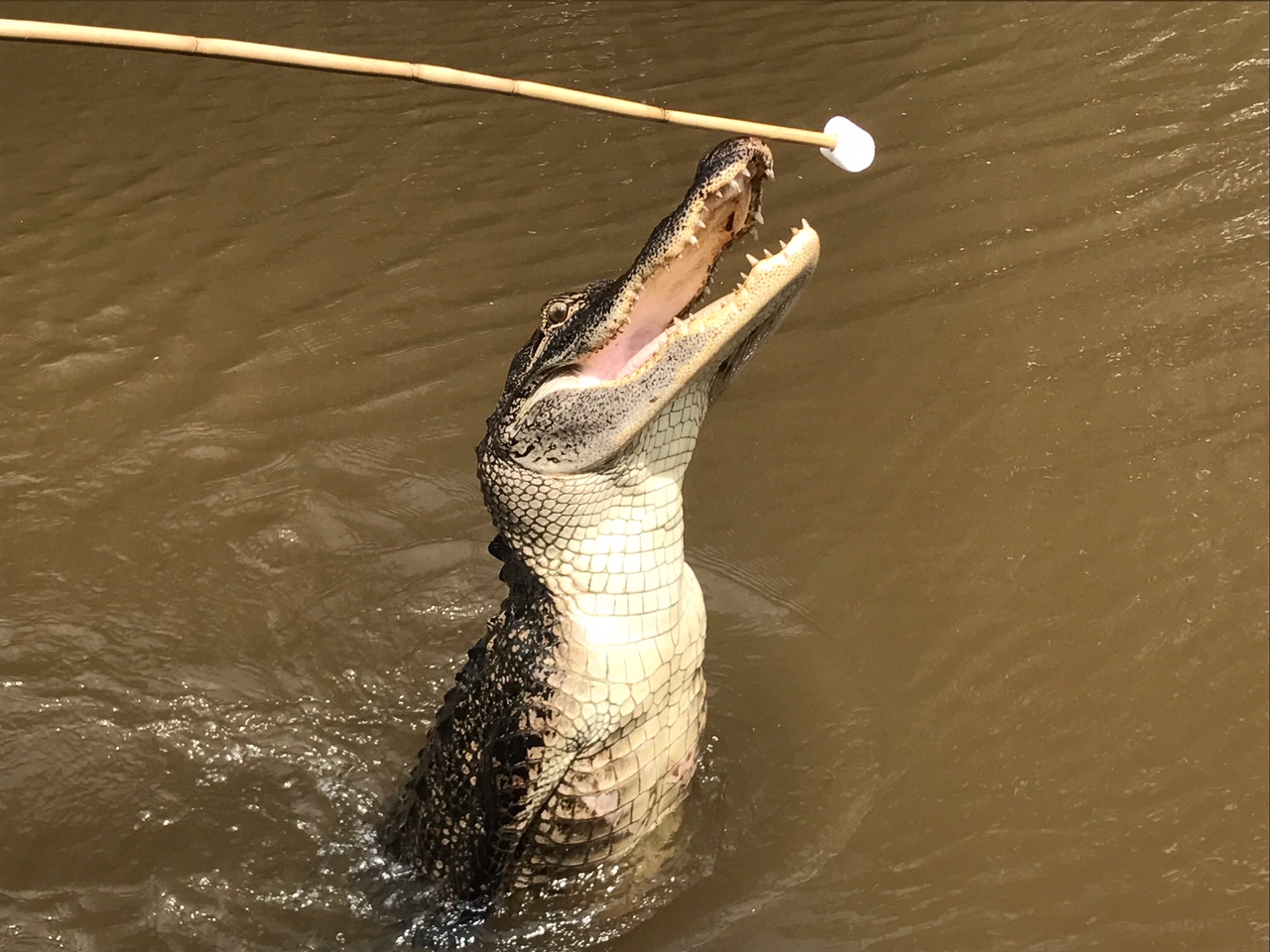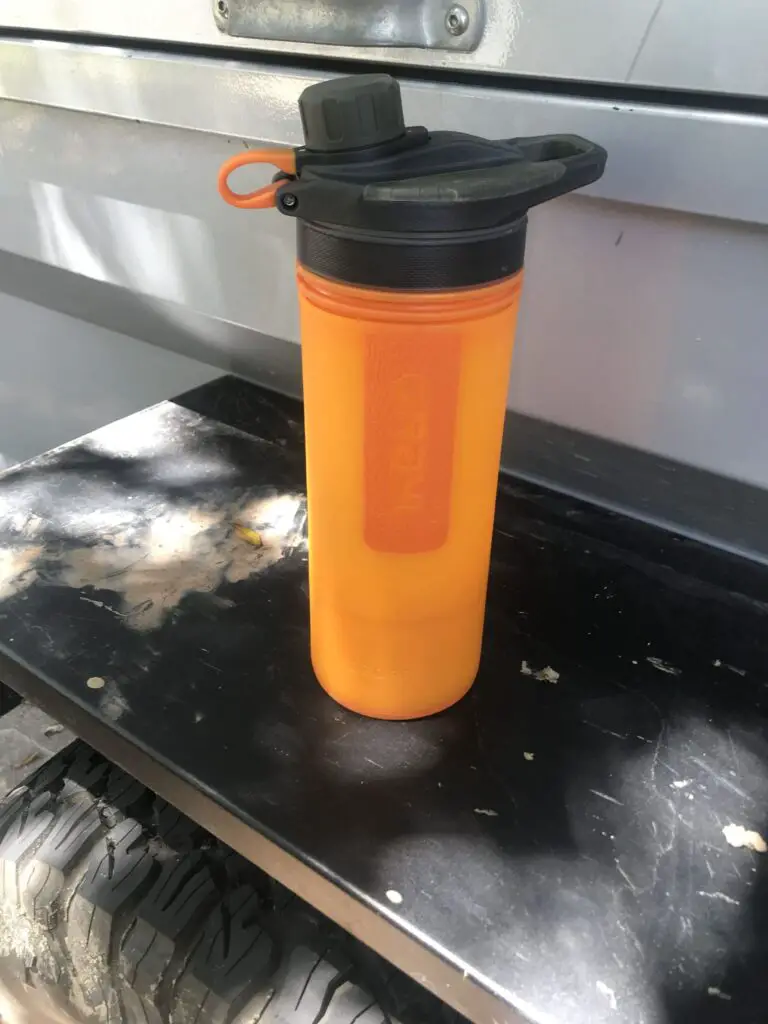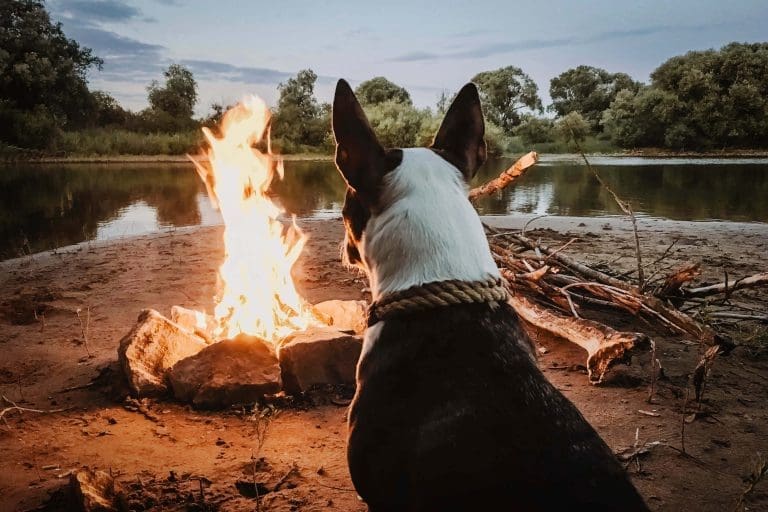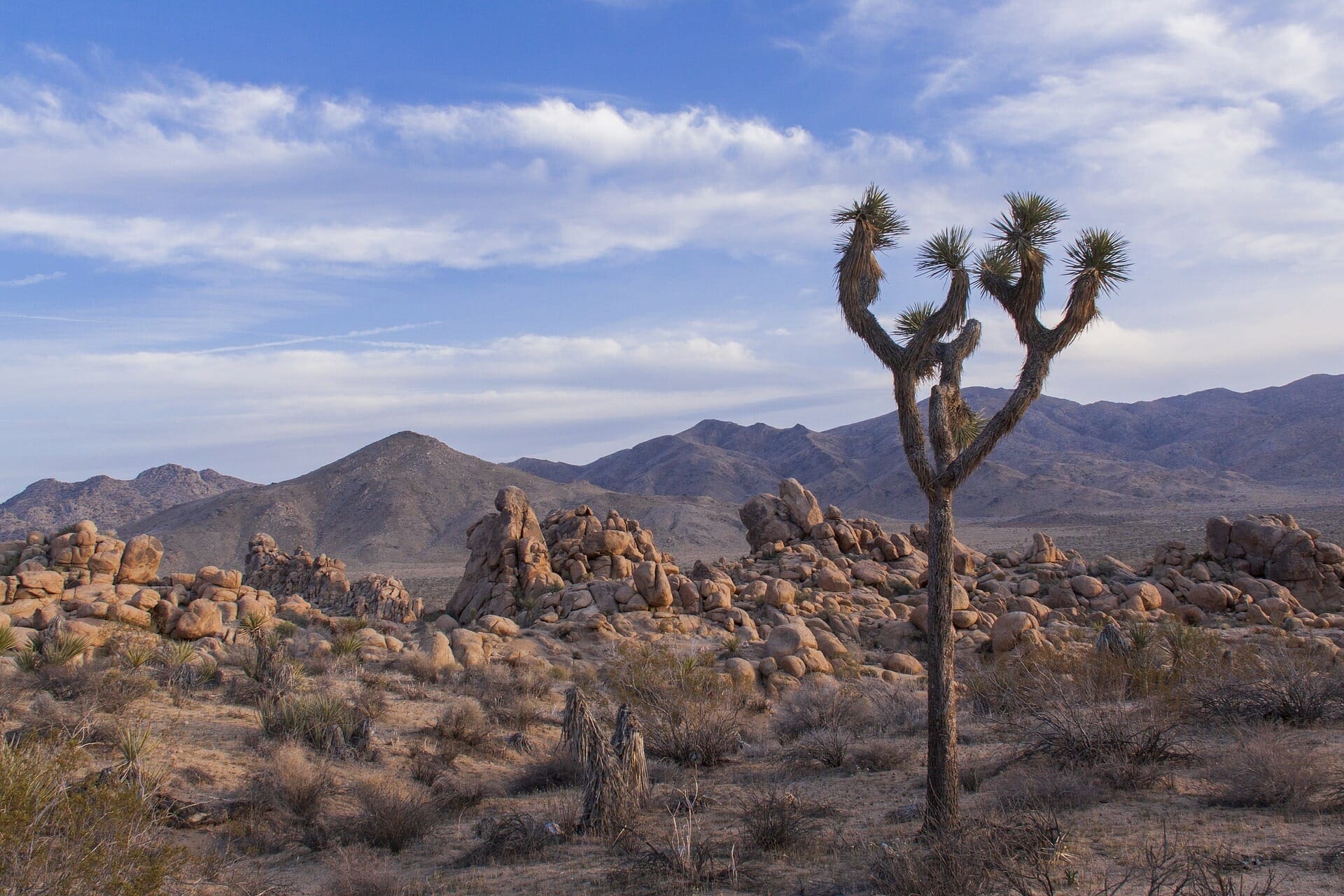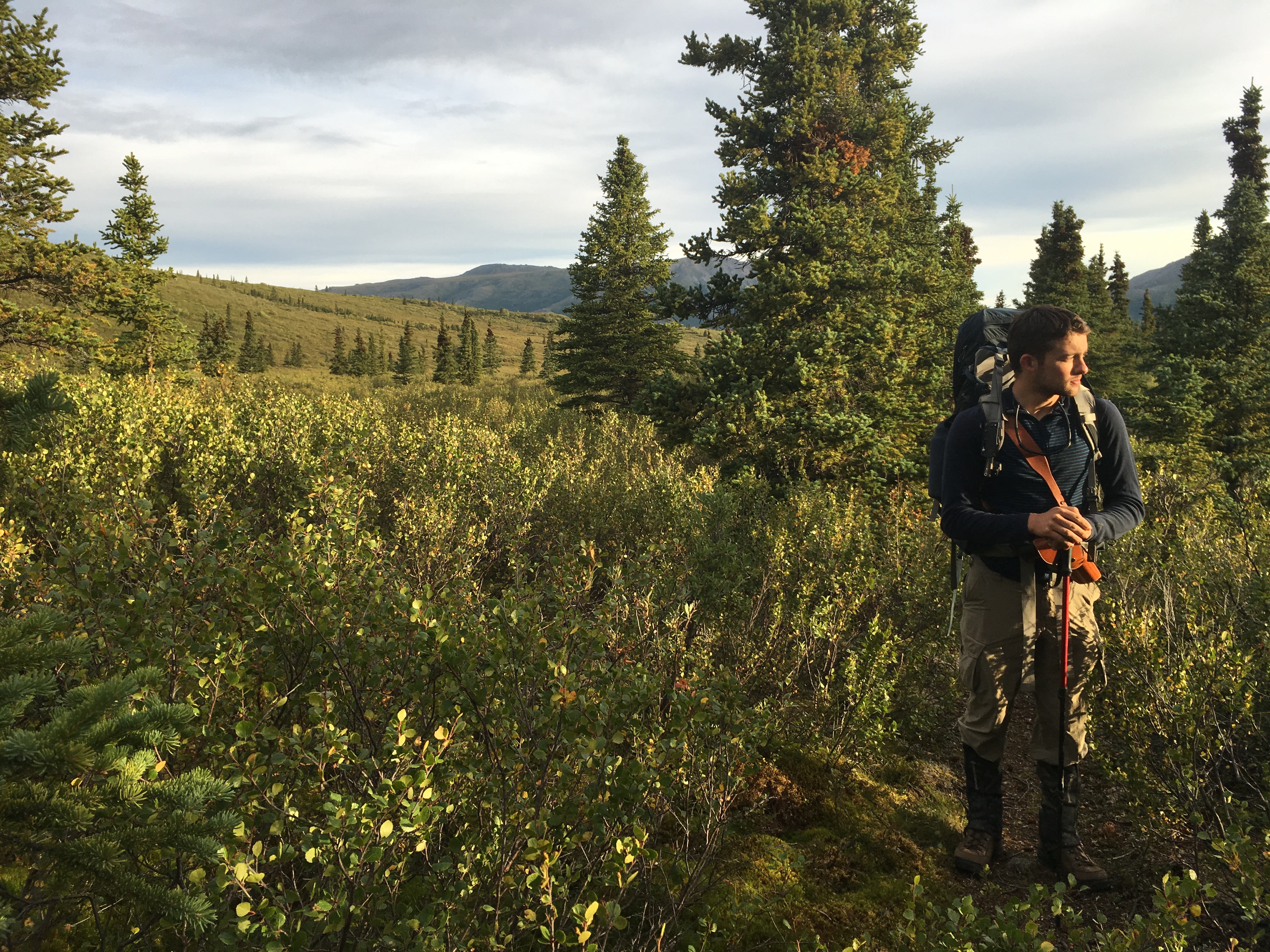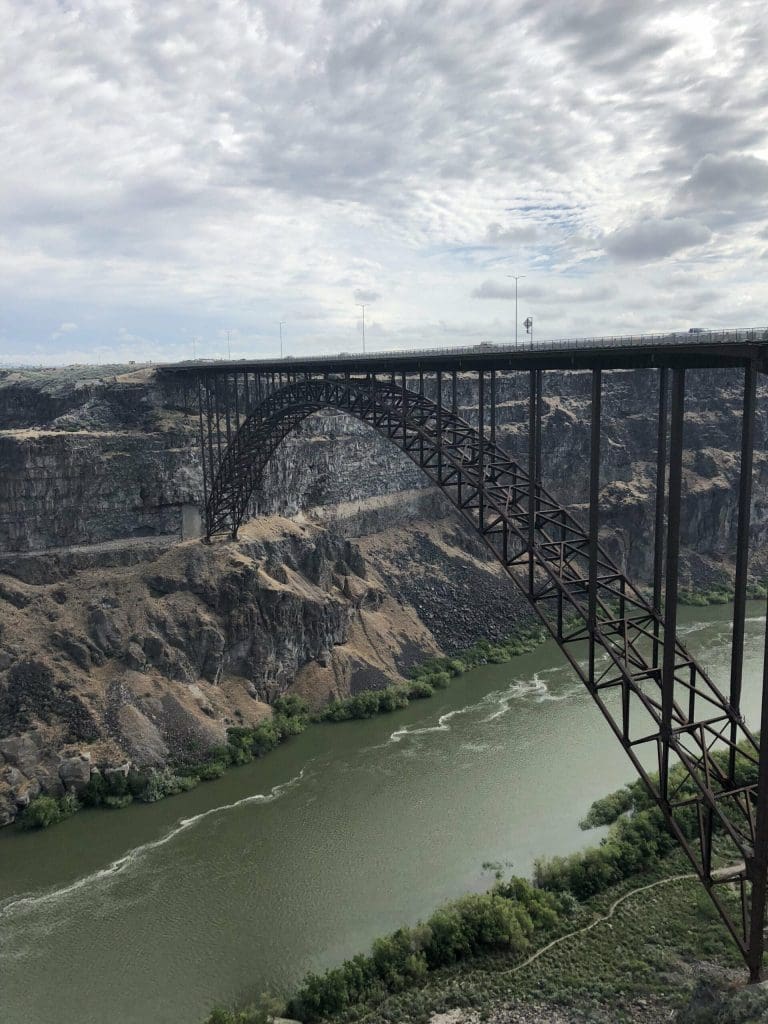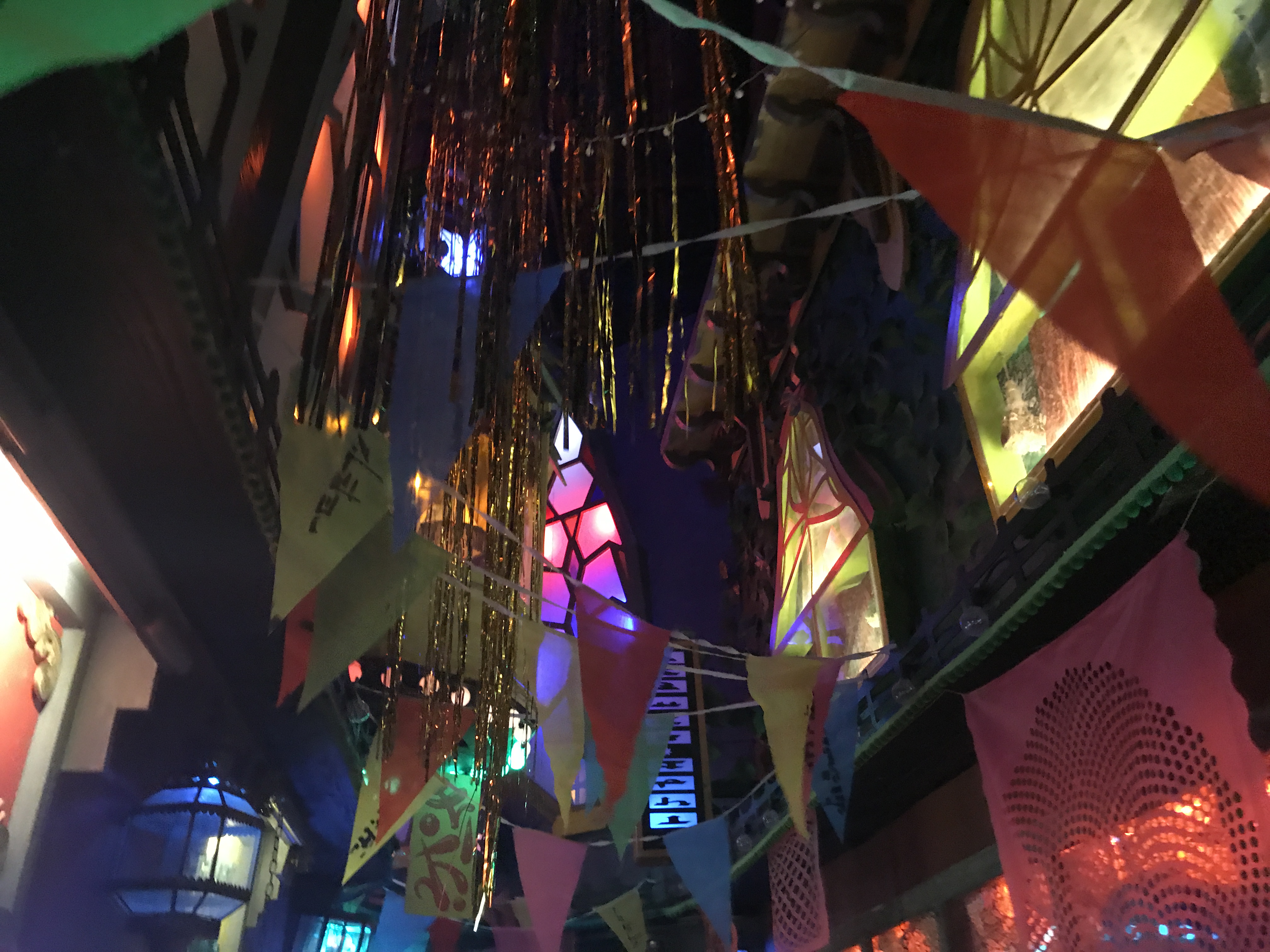Alligator Swamps of Slidell, Louisiana – Up Close Encounters
California is home to pretty much everything (hiking, beaches, rattlesnakes, the best food in the nation, etc). One thing it doesn’t have? Alligators (and swamps, but Louisiana can keep those).
Honey Island Swamps
My aunt, who’s been living in Louisiana for who knows how long, had previously suggested a lovely adventure of waking up early (not really my forte) and driving a road trip about thirty miles southeast to the humid swamplands of Slidell, Louisiana.
The draw? An up close and personal look at one of the most famous creatures that inhabit the south: Gators.
This was done through the Pearl River Eco-Tour, just one of many swamp tour companies that offer historical insight on the wetlands of the Honey Island Swamp.
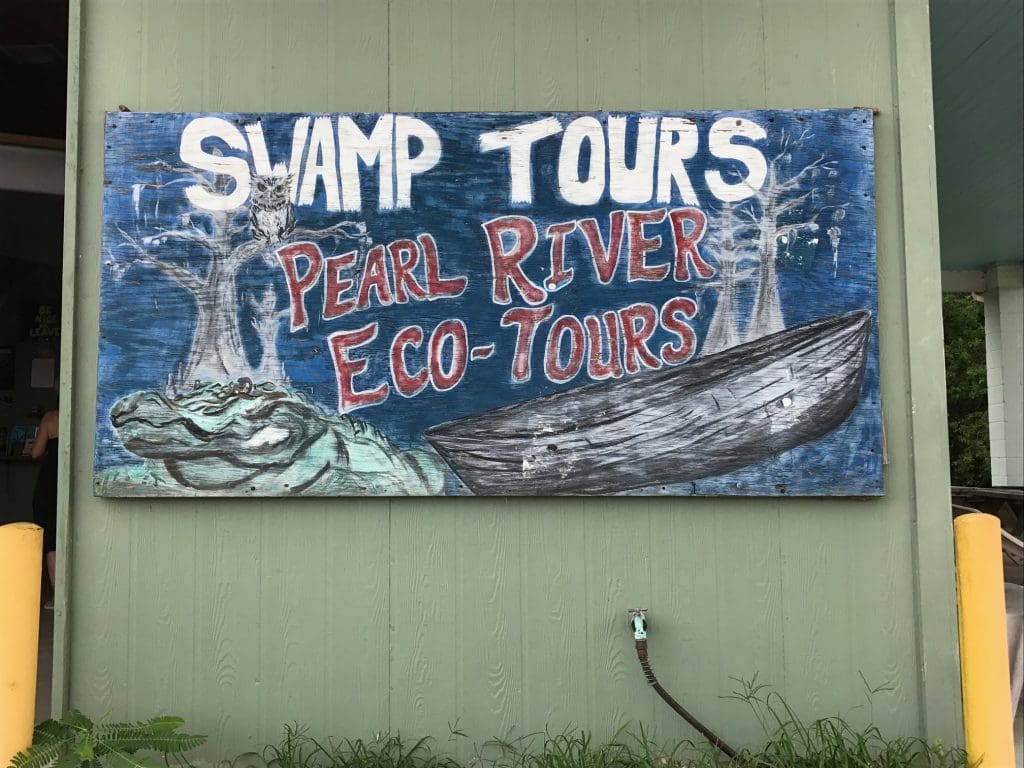
Before the Tour
The Honey Island Swamp is located about 35 miles northeast of New Orleans, in what is known as “the deep south.”
Swamp tours are reservation only with ticket prices at:
- Adult: $25 (without transportation/pickup) or $52 (with transportation/pickup)
- Kids: $15 (without transportation/pickup) or $32.50 (with transportation/pickup)
Being the early bird that my aunt is, we opt for the 9:45 am tour and wait alongside the marshlands for the rest of the gang to show up.
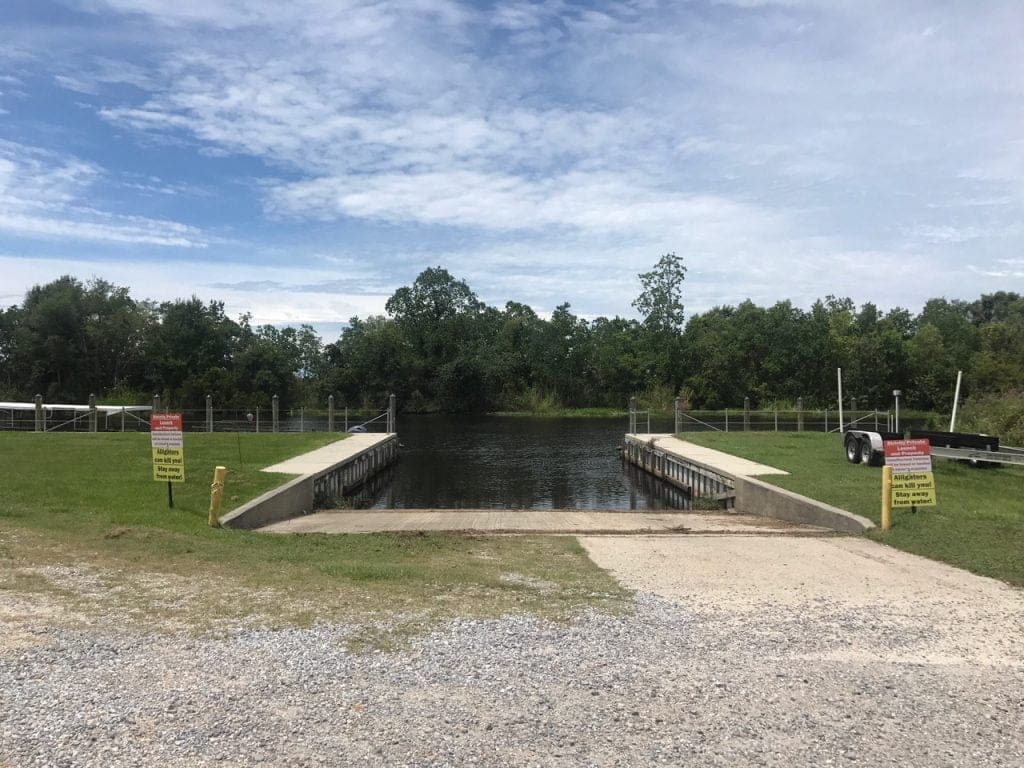
As I mentally prepare for an alligator battle, I come across a sign that says “Alligators can kill you! Stay away from water!”
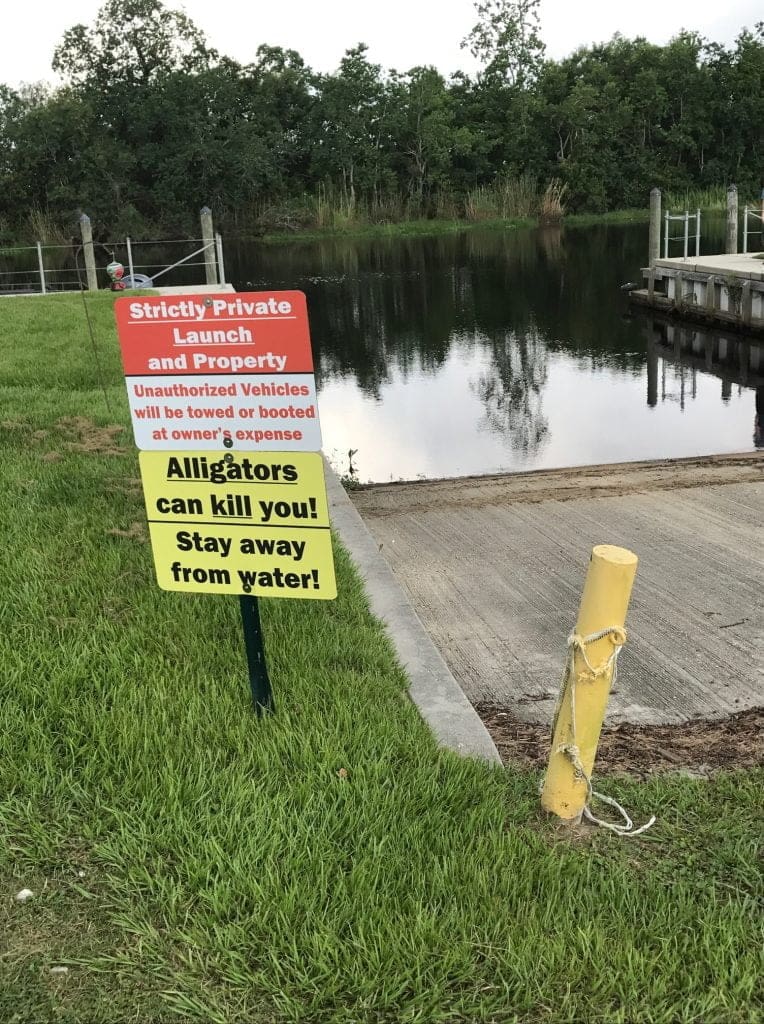
I wonder how many poor souls went swimming in the swamps before these signs were needed…
We soon board a rather large boat with 360° rails and a hooded cover on top. These boats can accommodate up to 26 people, and ours was definitely at maximum capacity.
Swamp Tour: Part 1
I forgot the name of our tour guide, but I will preface this by saying he was wonderful and informative with an exuberant personality, especially when it came to feeding gators (but more on that later).
He first gives us an overview of the Honey Island Swamp, which covers over 20 miles of protected wildlife (actually it’s one of the most protected river swamps in the nation).
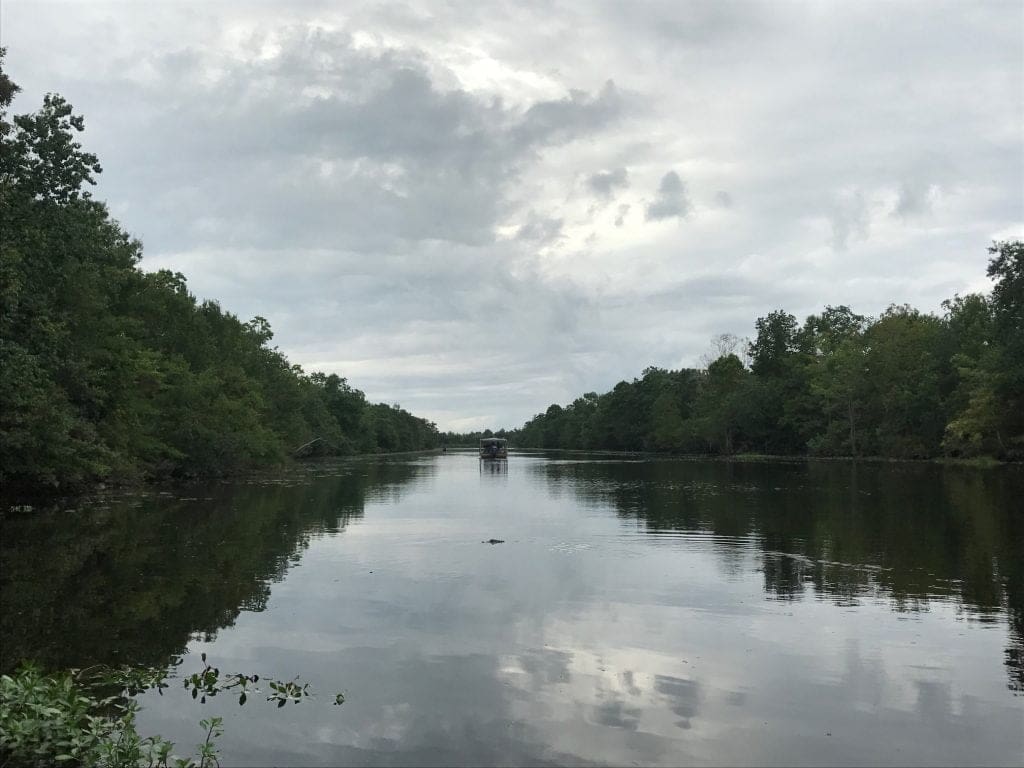
Exotic creatures that inhabit the swamps include gators, wild boar, turtles, snakes, waterfowl, raccoons, eagles, and black bears (I didn’t see any bears or raccoons sadly, but the gator count was high).
Honey Island got its name because of the prominent number of honeybees in the area (and they luckily reside on the perimeters of the swamps).
We’re soon taken to some of the wreckage of the Hurricane Katrina disaster, one of the deadliest hurricanes in history that claimed over 1,800 lives.
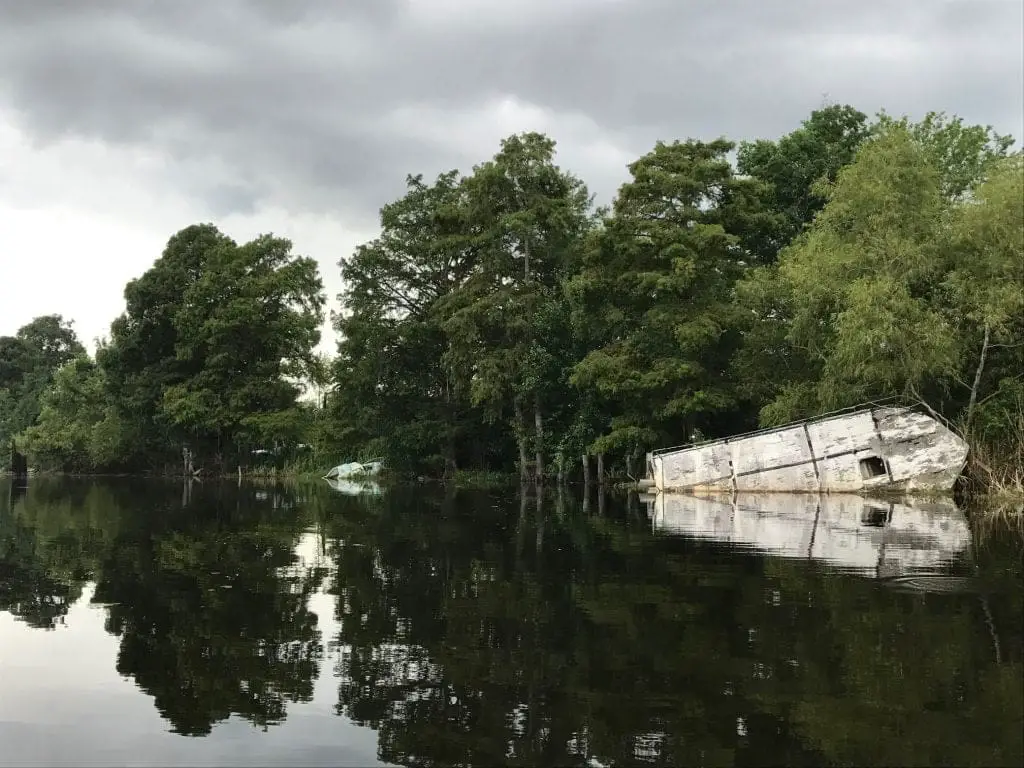
Even though it’s been over 10 years since this category 5 hurricane struck, it has left a lasting impact on the environment and people of the south.
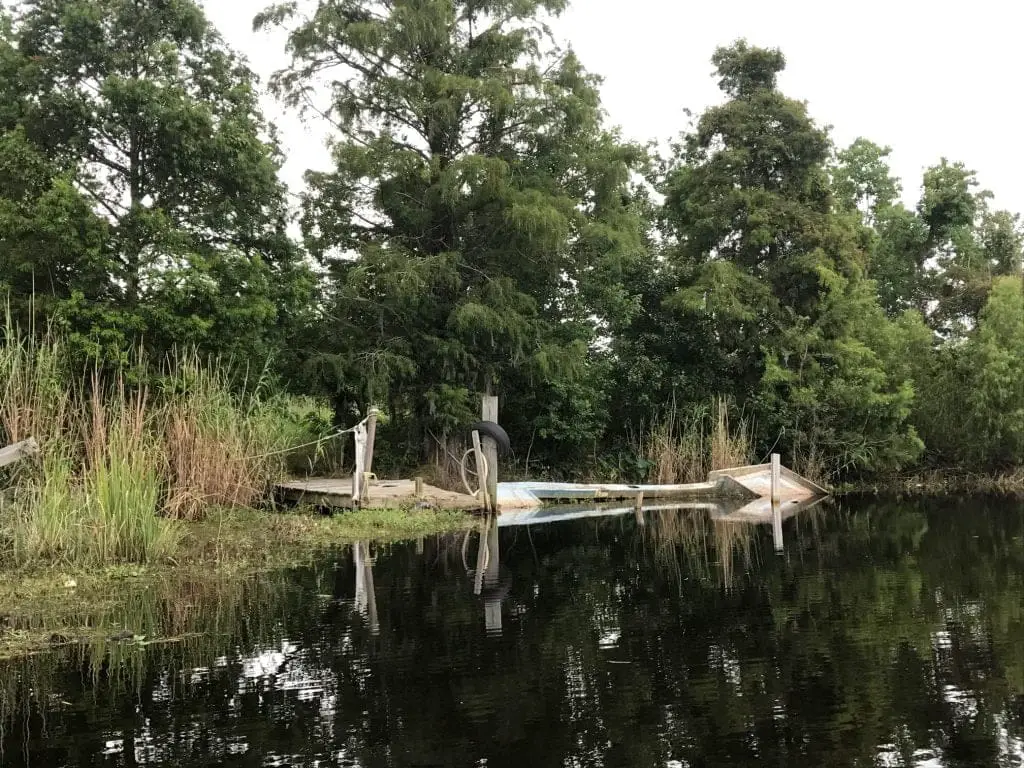
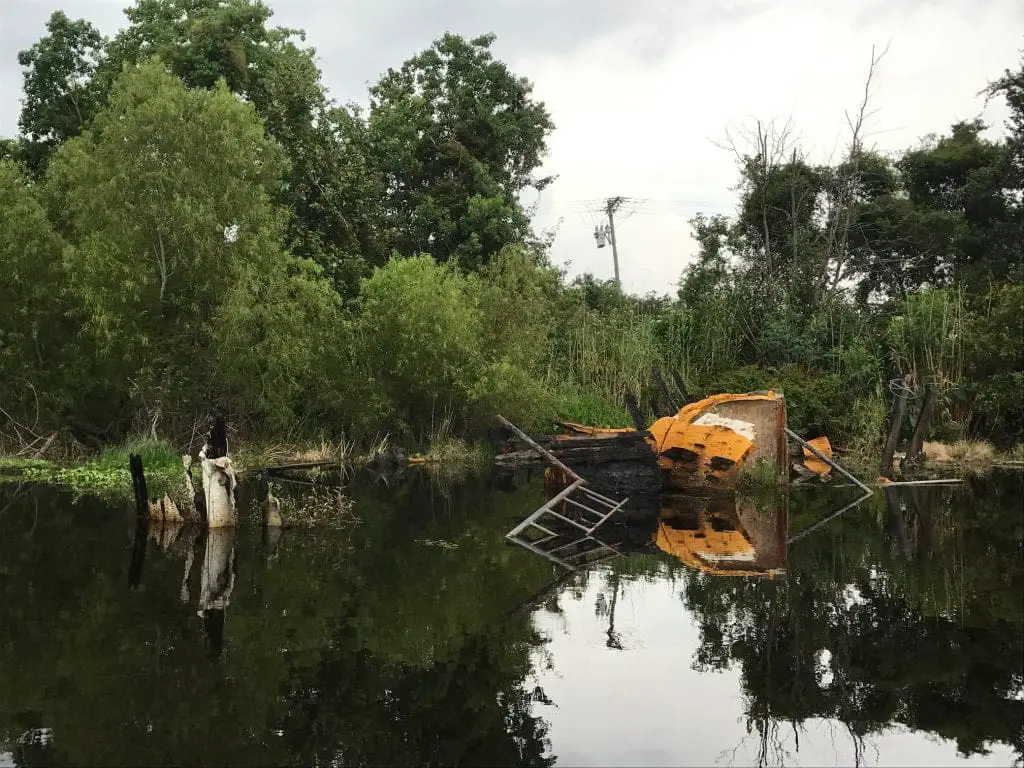
The tour guide then informs us that a giant, 12-foot alligator named Elvis lives around these parts of the Hurricane Katrina wreckage.
He tries to get its attention through yelling, whistling, and offering marshmallows as a token of our appreciation, but Elvis was nowhere to be found.
What a shame, I would have loved to pet an alligator almost 3 times my size.
We make a 360° turn and head down the swamps at full speed, with some (totally sanitary) swamp water splashing in my eye (thank goodness for the human immune system).
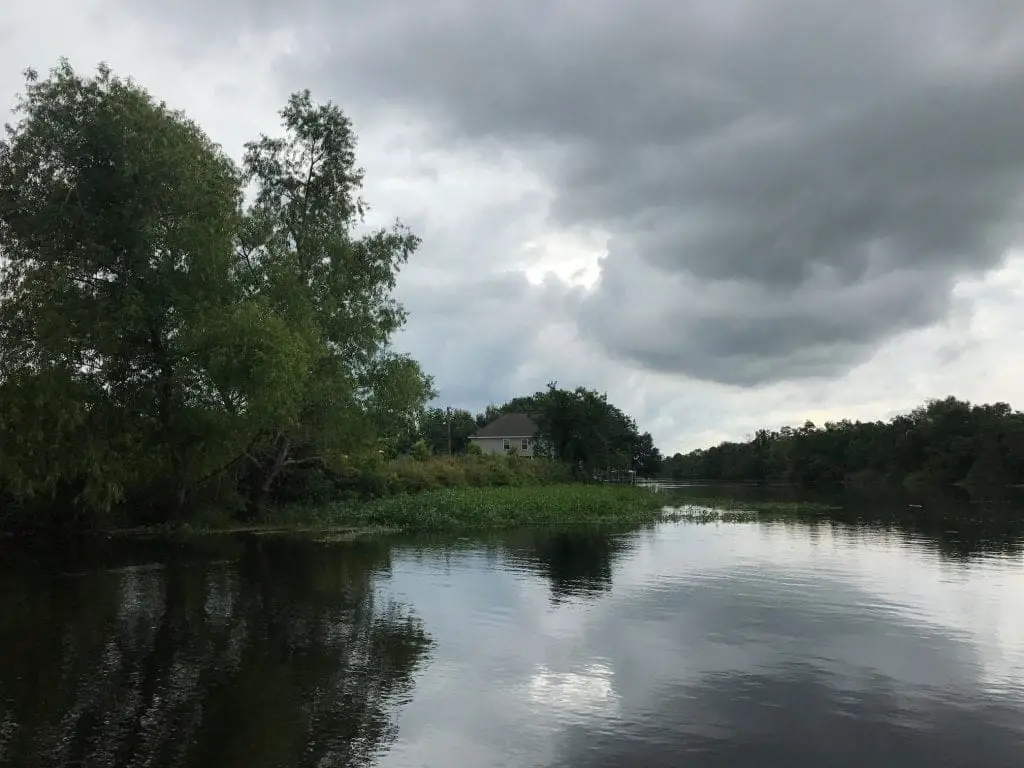
Our tour guide sees a small gator up ahead, blending in ever so inconspicuously with its surroundings.
He used the same tactics as before (yelling, whistling, marshmallows, human sacrifices) to attract these small gators, and let’s just say they easily took the bait.
The primal look of one of the gators, ready to eat those marshmallows.
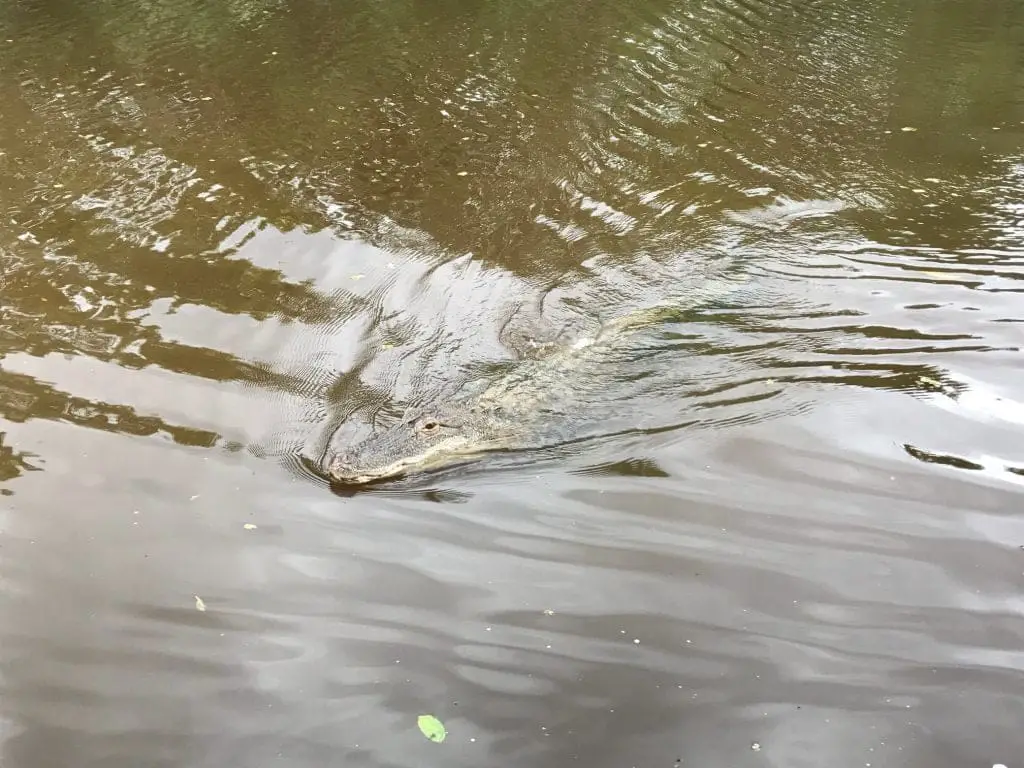
(Marshmallows, by the way, were always served on a 5-foot-long pole, with the gators jumping high above water for a chance at this coveted snack).
Why marshmallows? Gators eat almost anything, and marshmallows remind them of some sort of creature/insect (I forgot which one) and are instinctively drawn to consume these snacks, especially when noise (yelling/whistling) is involved.
We continue to head deeper into the swamps; Notice how murky the waters look. If I didn’t know I was in Louisiana, I might have mistaken the area for the milk chocolate river in the original Willy Wonka movie.
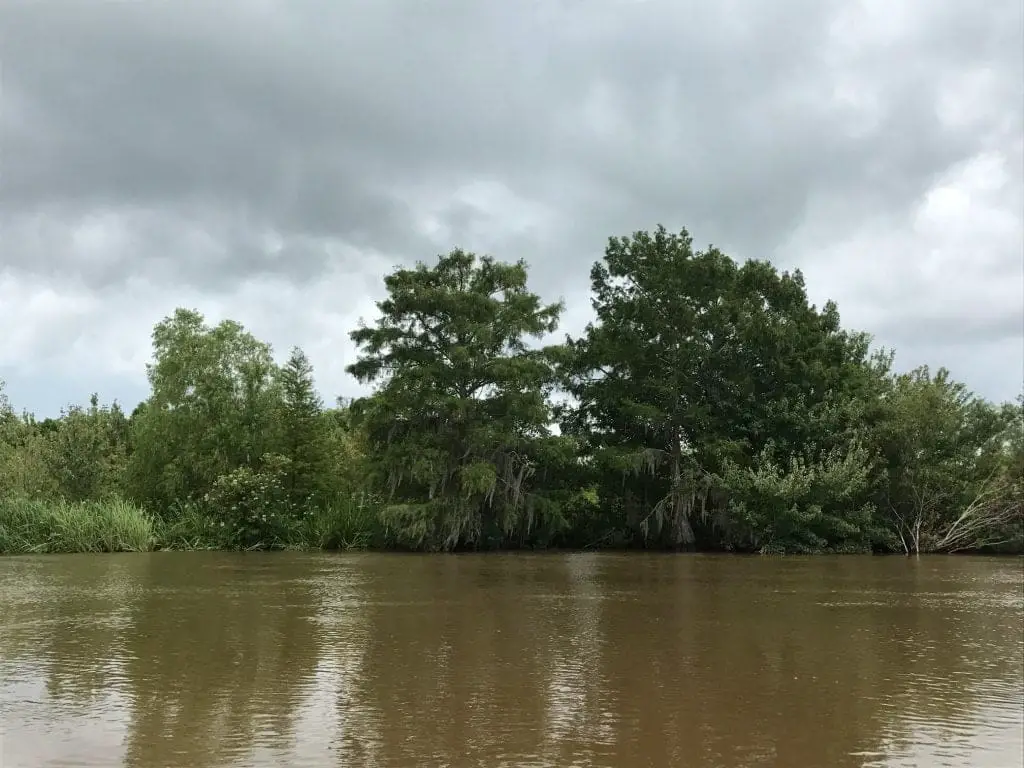
“People actually live here?” I thought. I personally can’t imagine living in such a humid environment among potentially deadly creatures.
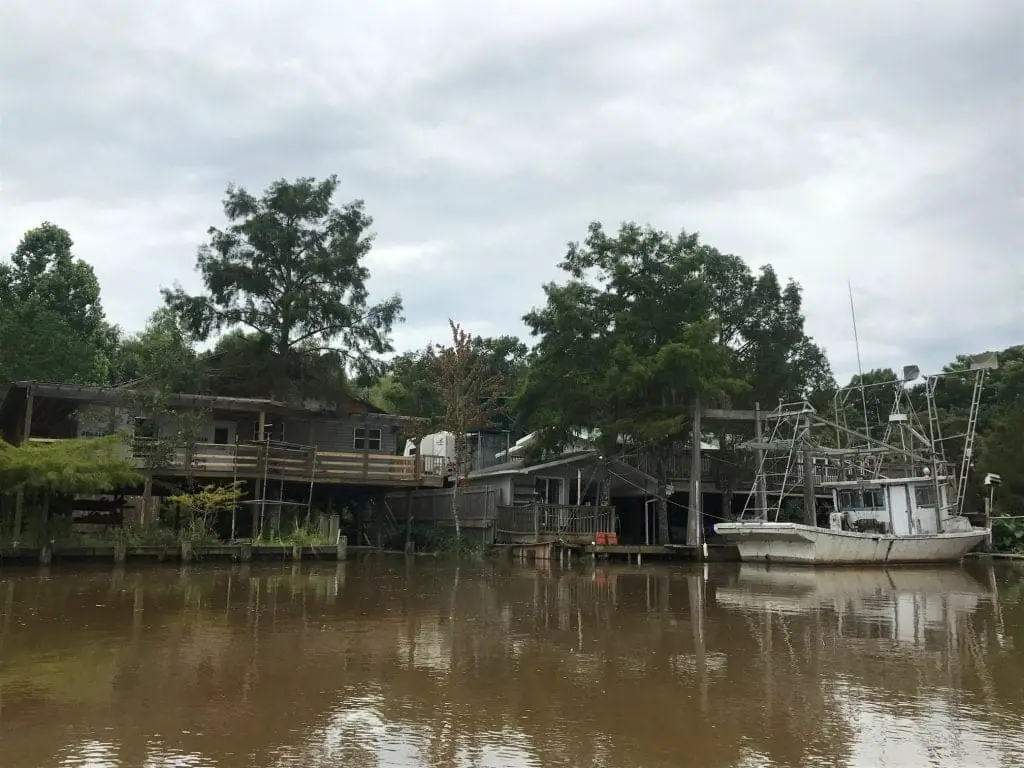
In fact, most folks that live in the swamps go fishing on a regular basis (I even saw a guy on a cute little boat just casually fishing with gators not too far from him).
An old bridge of some sort, which I doubt is operable (in fact, all of the swamp tour boats drove directly under this bridge).
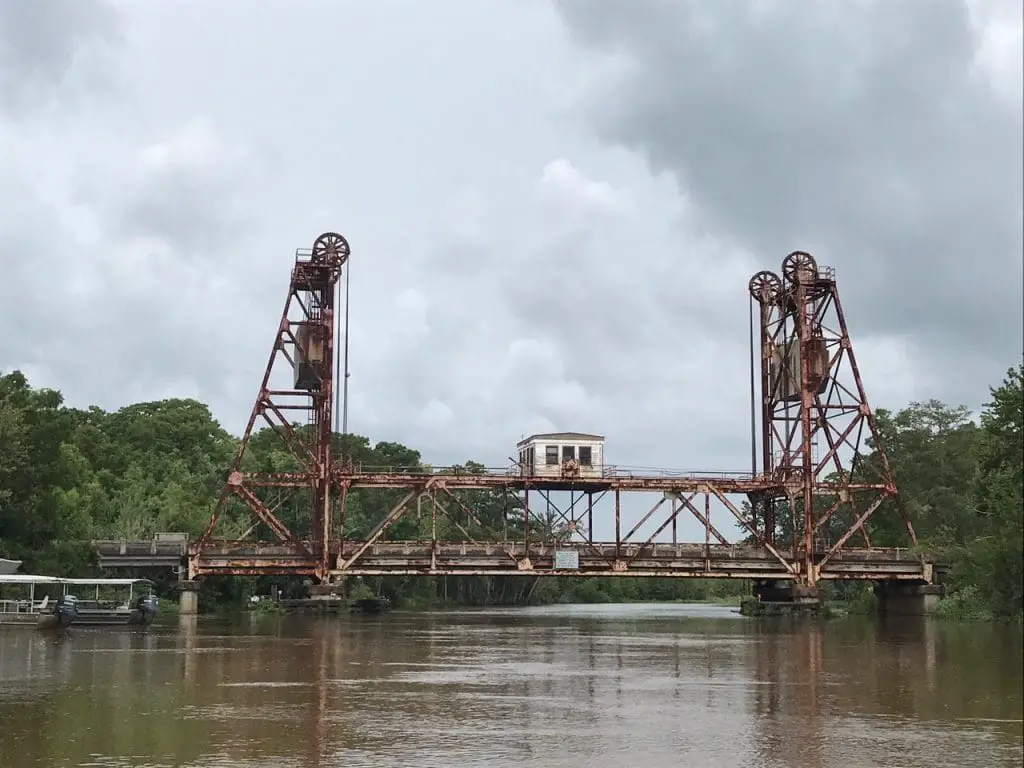
Another boat in the distance, next to a moss-filled tree.
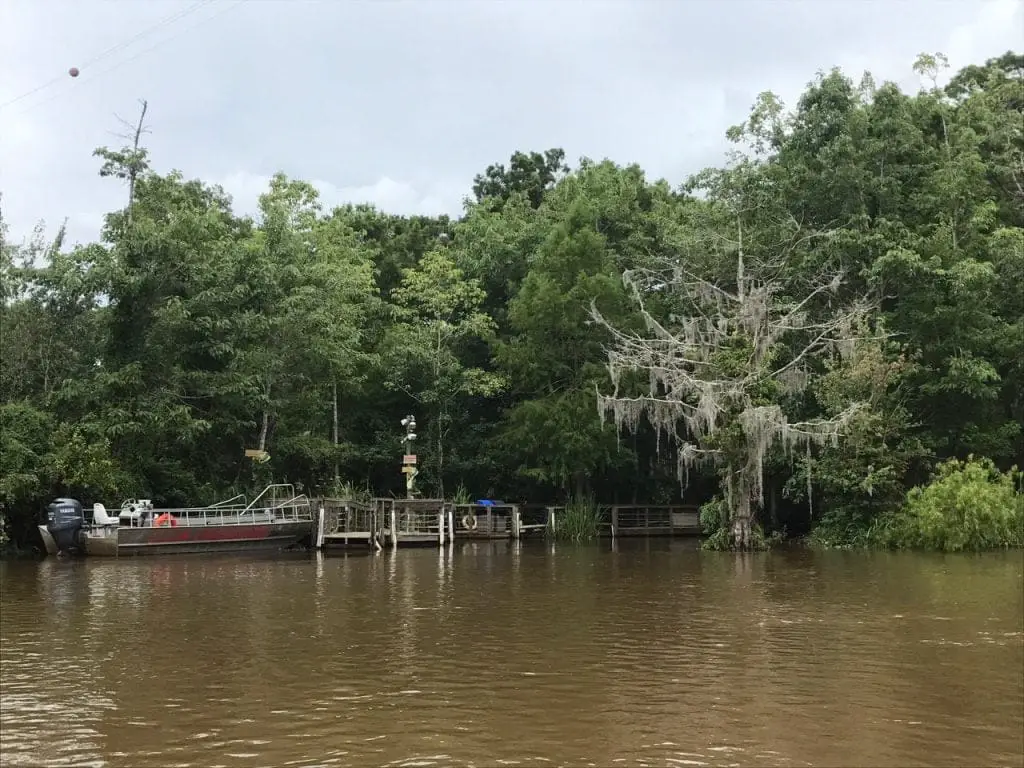
A cute little shack in the distance, perfect for housing a large family.
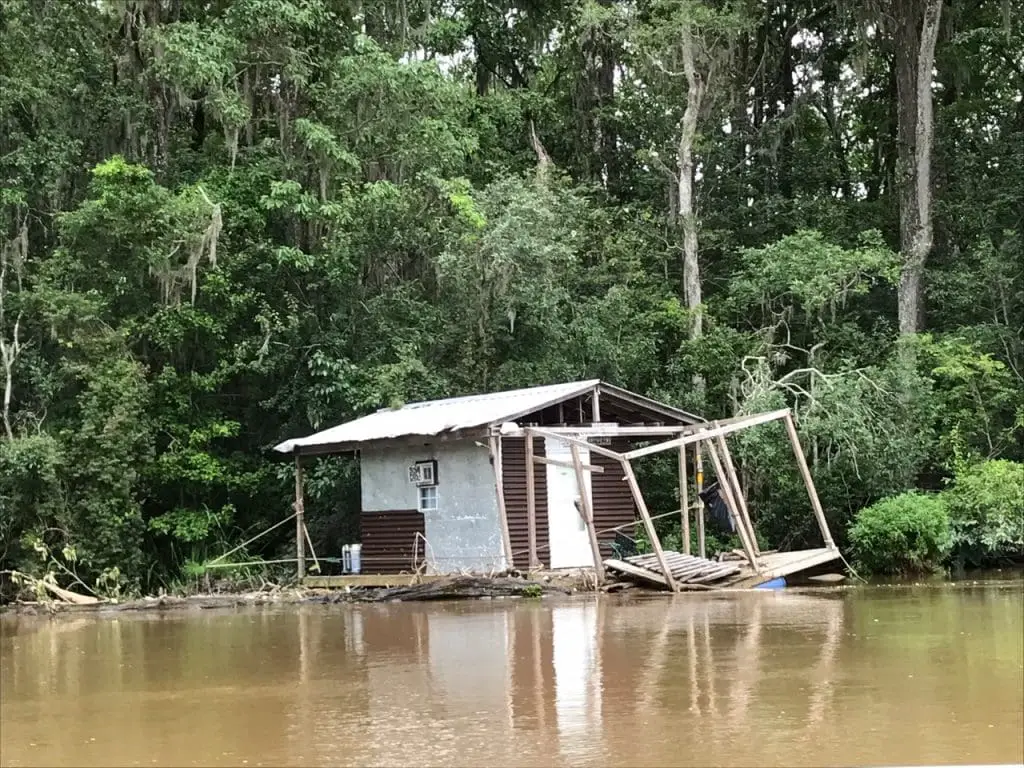
We descend deeper into the swamps as I notice quite a few exotic waterfowl, like this turtle below, which is quite rare.
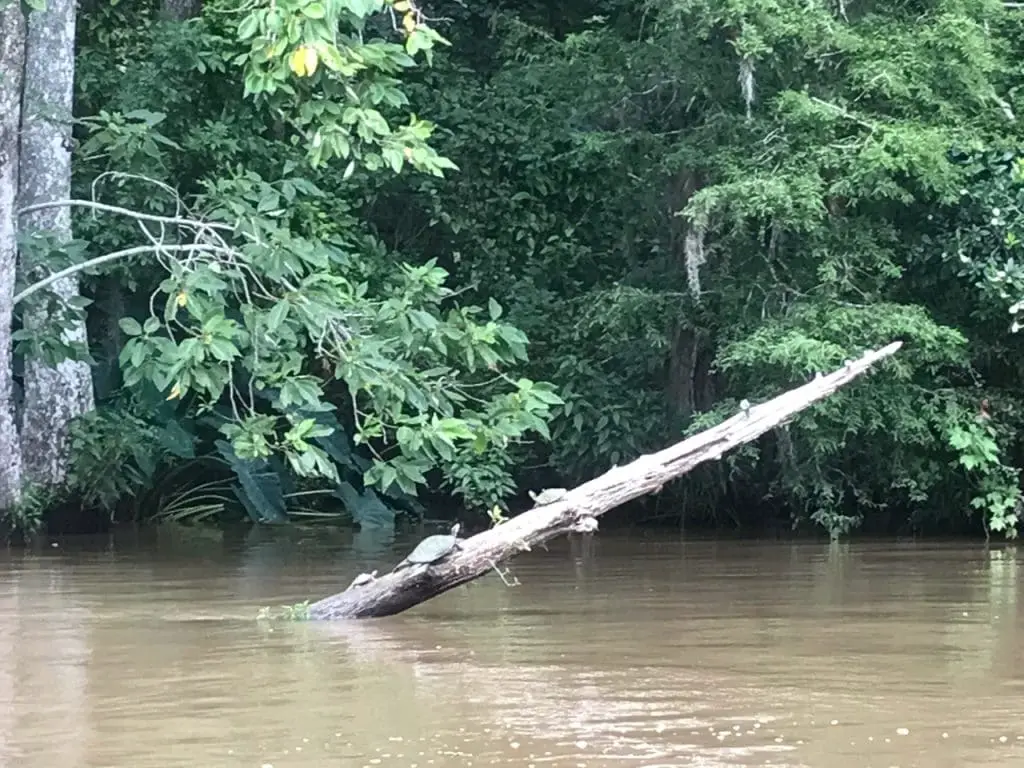
A small, 5-foot gator on its way toward our boat, which looks like a mini speedboat from a distance.
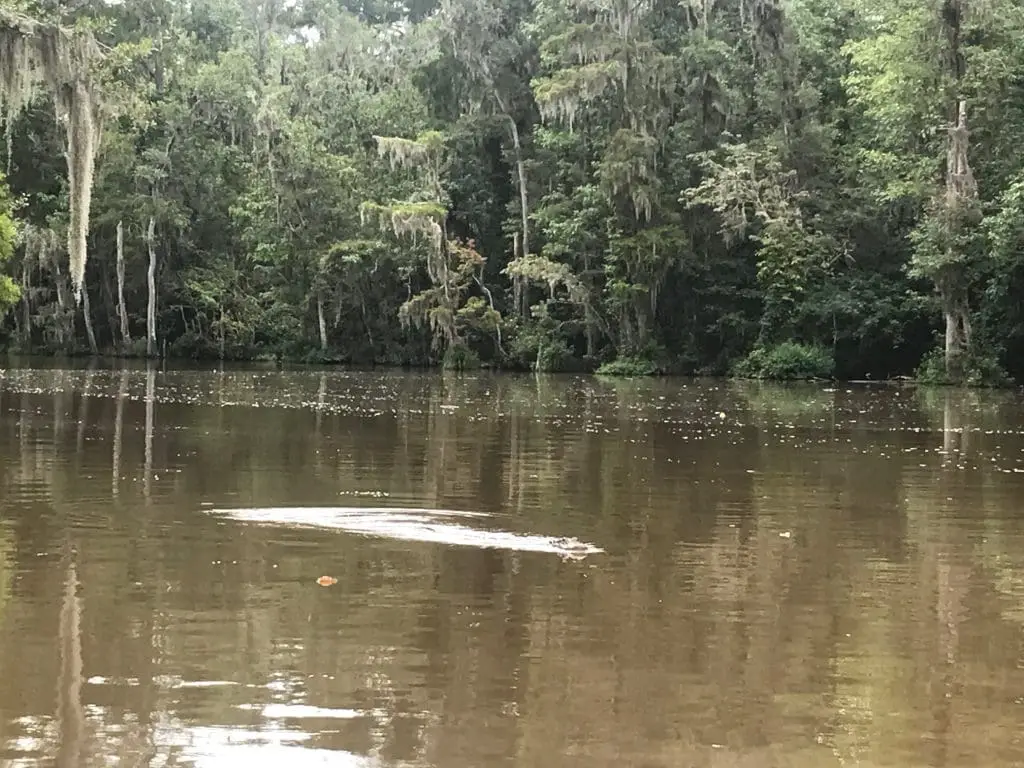
The terrain changed slightly when we took a detour into the more intimate, forested terrain of the swamps, which looked like an otherworldly set of a movie.
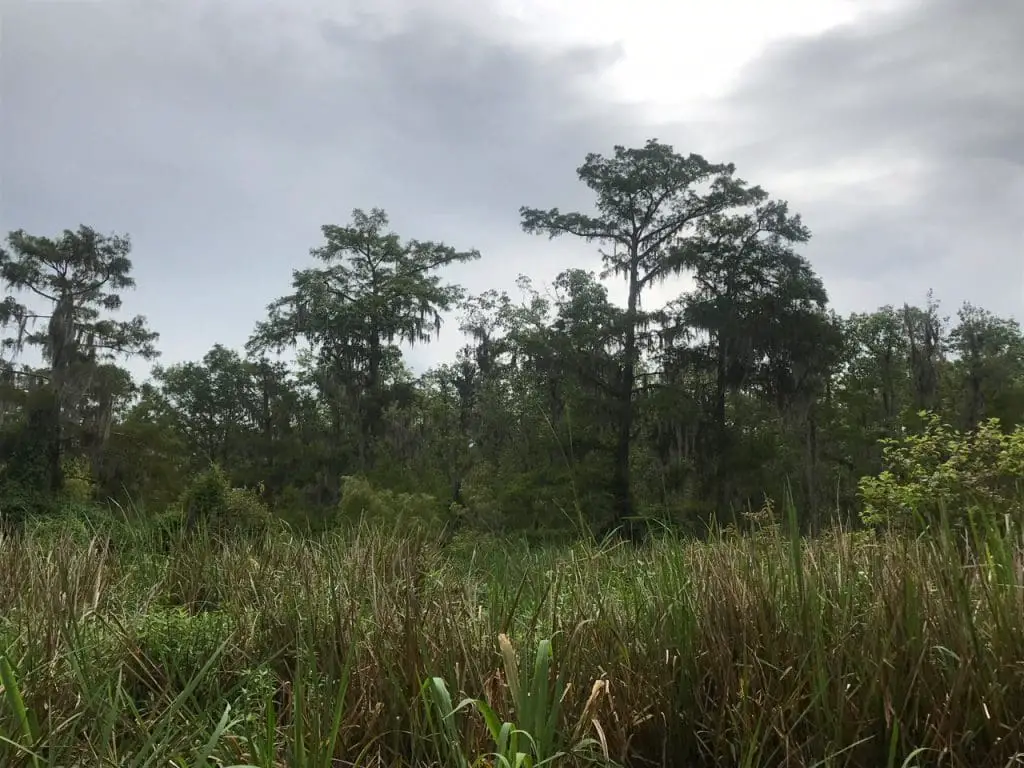
Swamp Tour: Part 2
The milk chocolate river narrows so much that the boat begins to brush up against the plant life of our surroundings (with a potential chance of snakes coming on board).
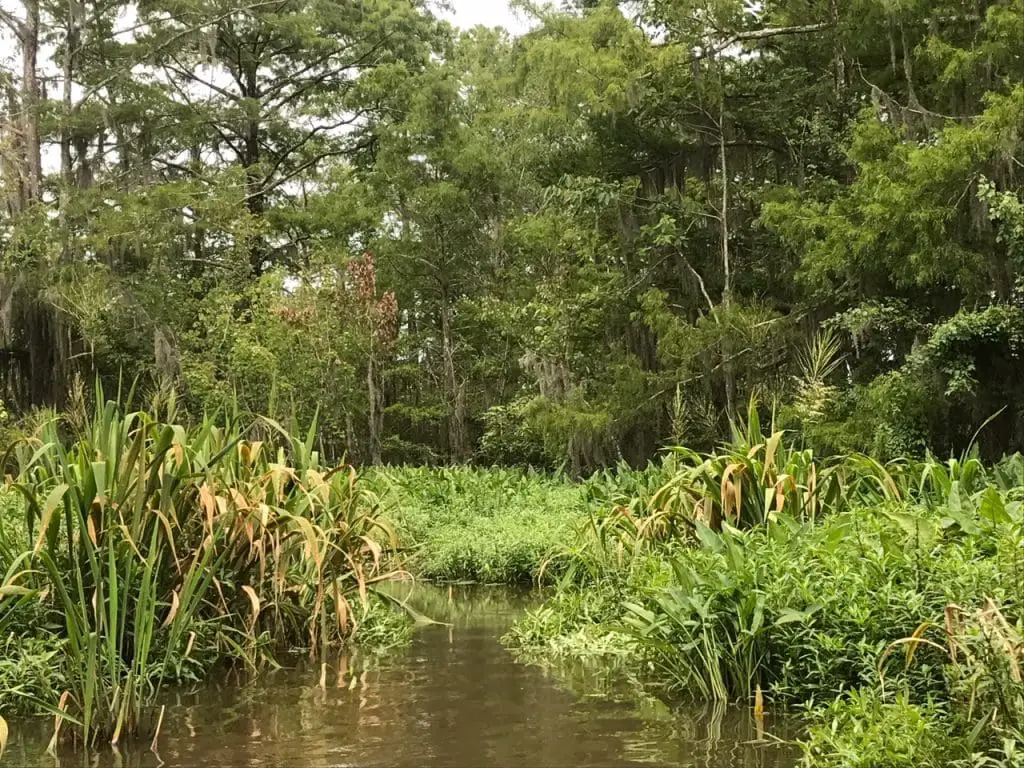
Another gator in the distance, casually hiding along the perimeter of the swamp.
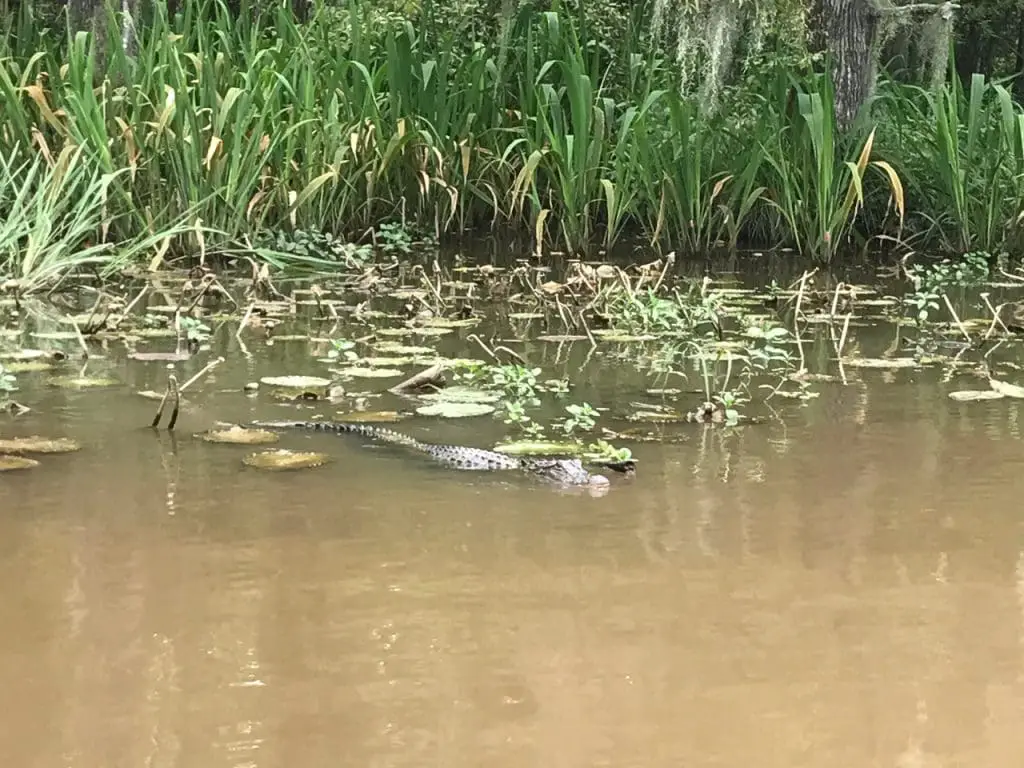
One of the coolest parts of the swamp tour was seeing wild boars roaming the waters of this forested area. I guess I never equated boars with an aquatic environment, especially when there are gators in close proximity.
A few of the boars wanted to come on board our boat, but all they got were marshmallows.
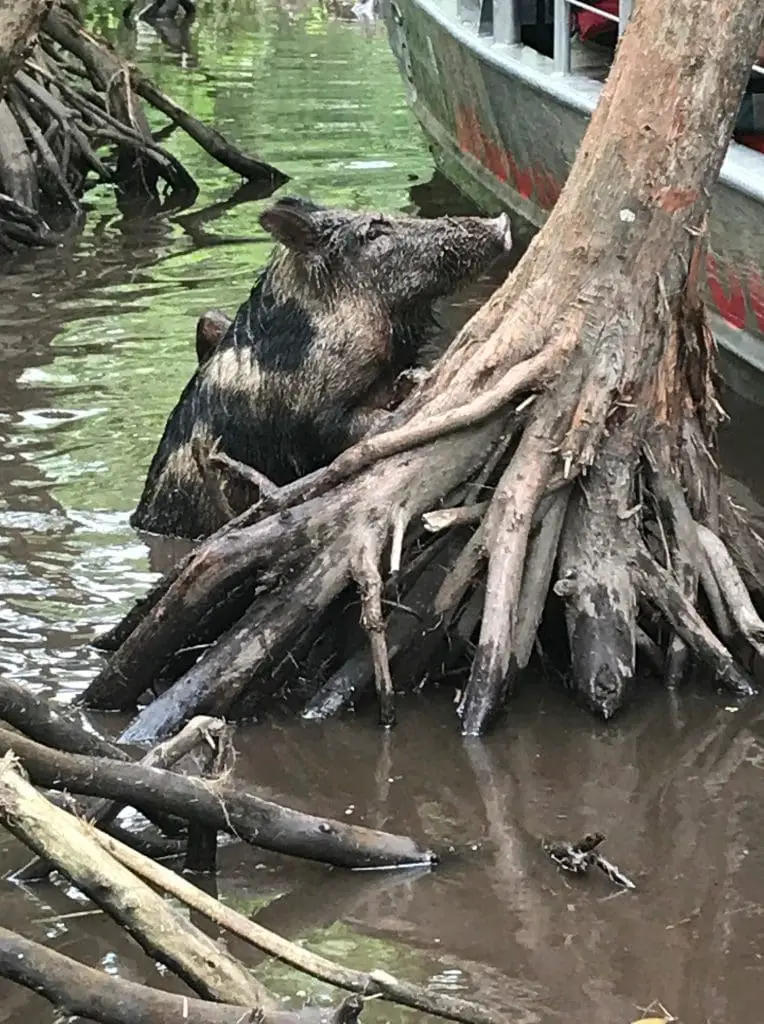
Another wild boar, inconspicuously hiding behind some sticks.
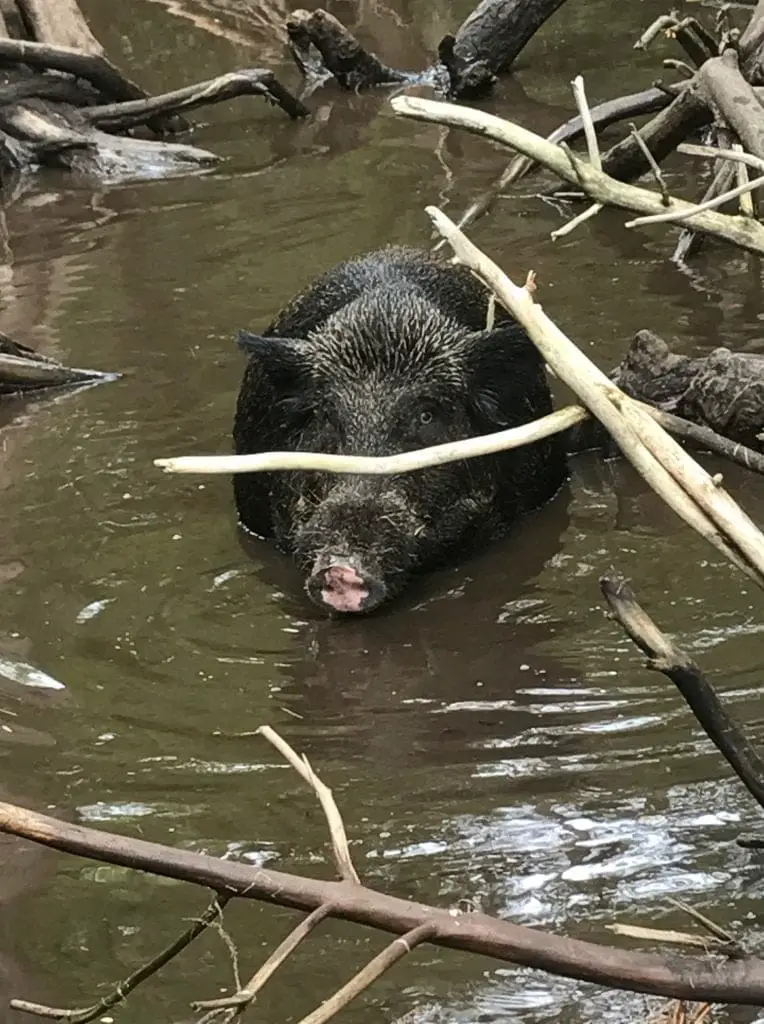
Let’s just stop and take a moment to appreciate how gorgeous this forest looks, which was so calming and peaceful to be a part of.
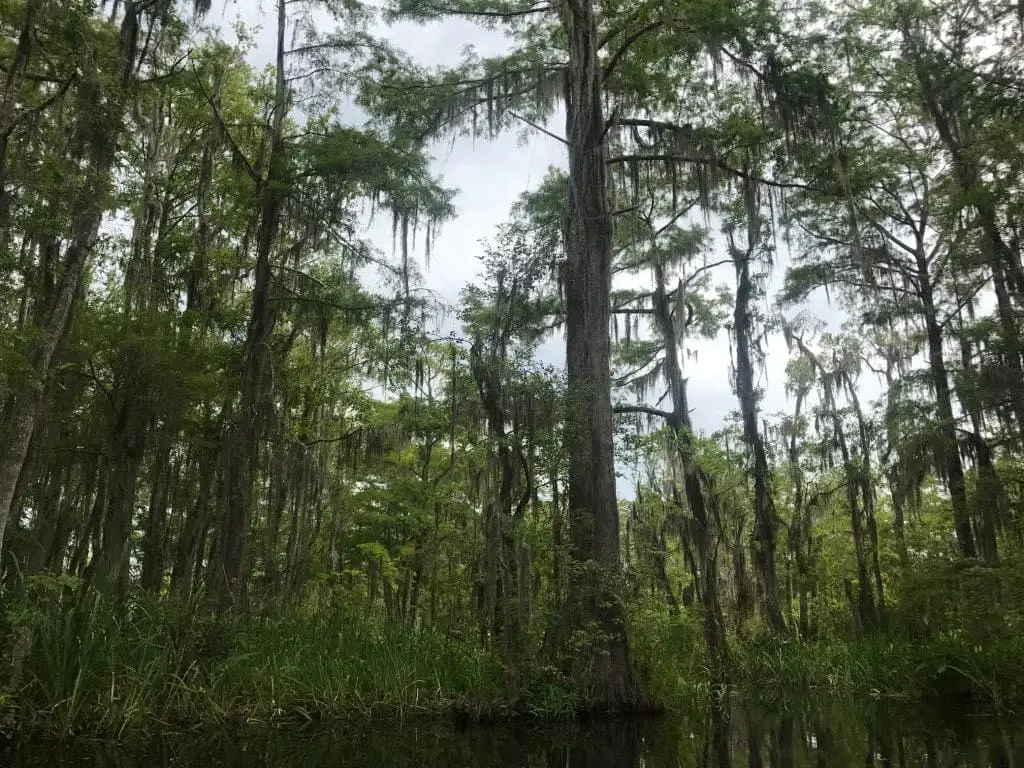
We head to an area where our tour guide proclaims his love for crawfish, and how it’s a staple in southern cuisine. In fact, this guy actually has a cage-like trap for catching crawfish in the swamps.
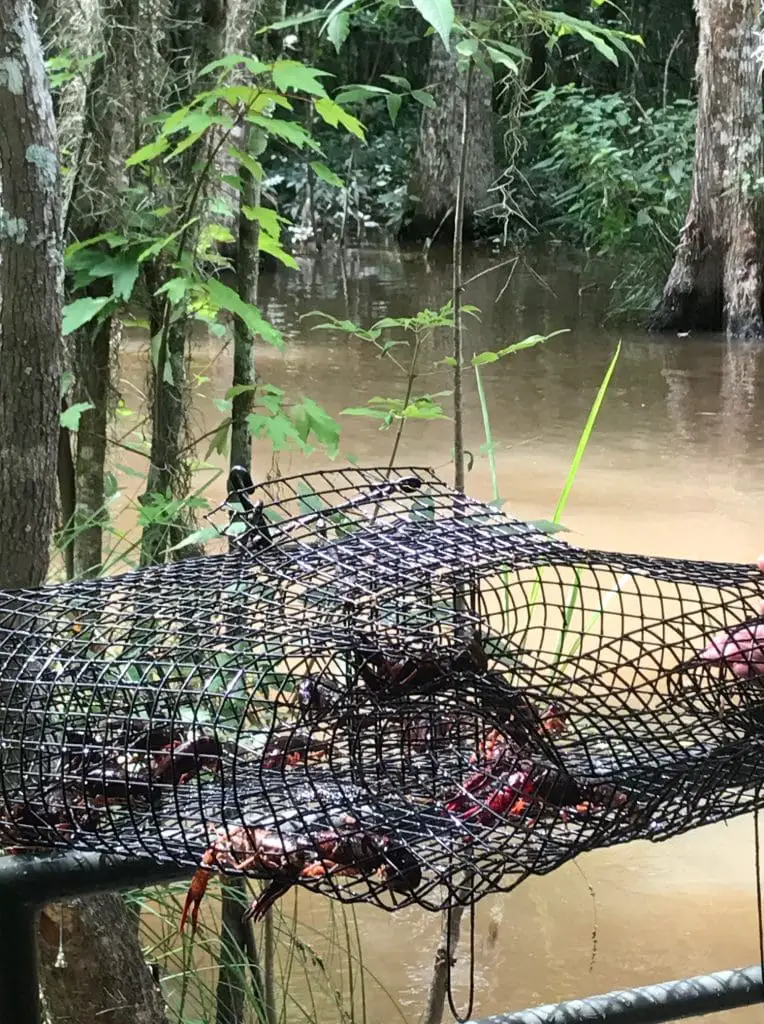
An up-close look at one of the crawfish, which our tour guide was just casually holding, unafraid of potentially being attacked.
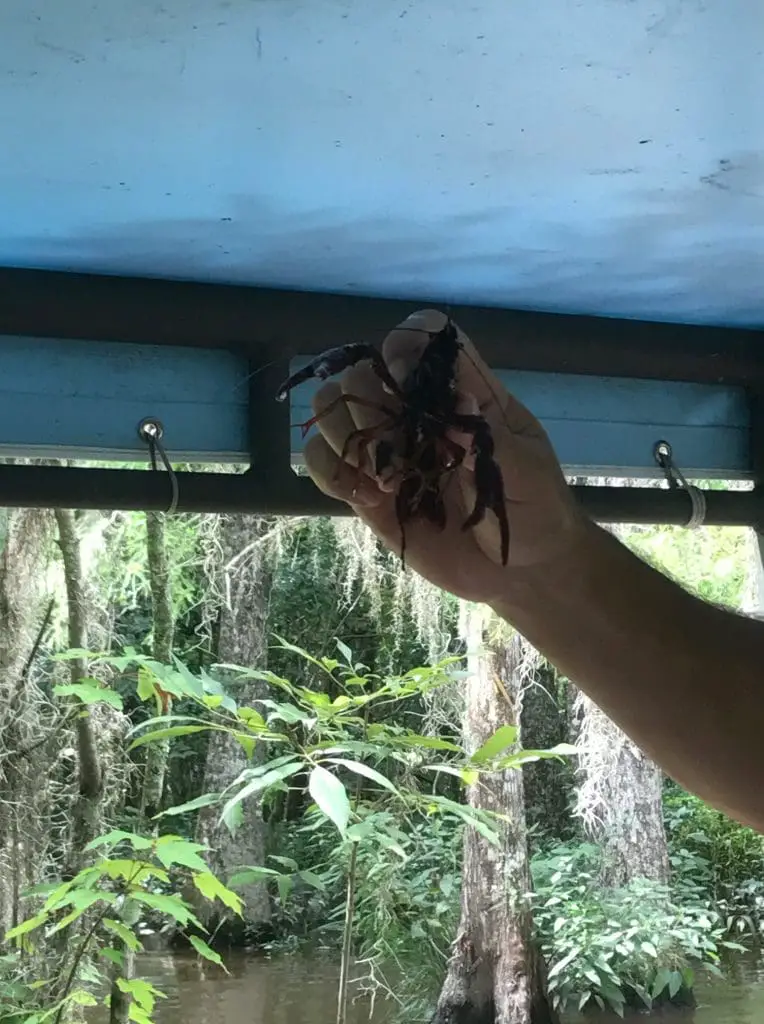
We head back out of the forested area toward civilization – sort of.
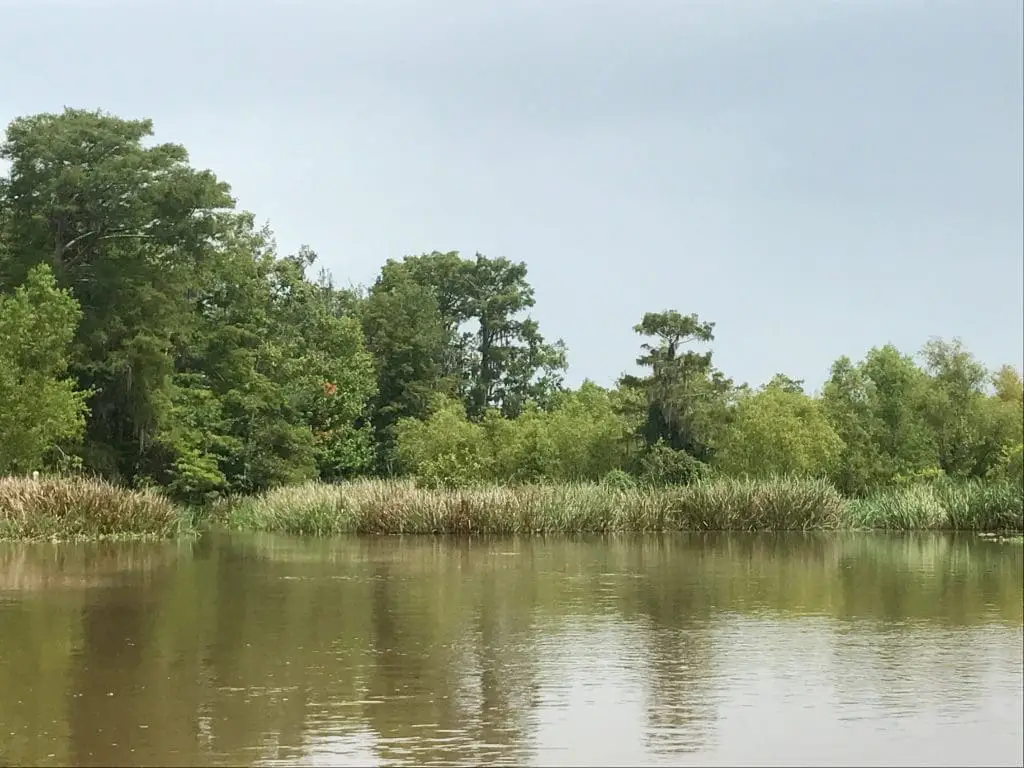
More alligators drew near this time (sometimes in groups of 2 to 4), hungry for potential human sacrifices.
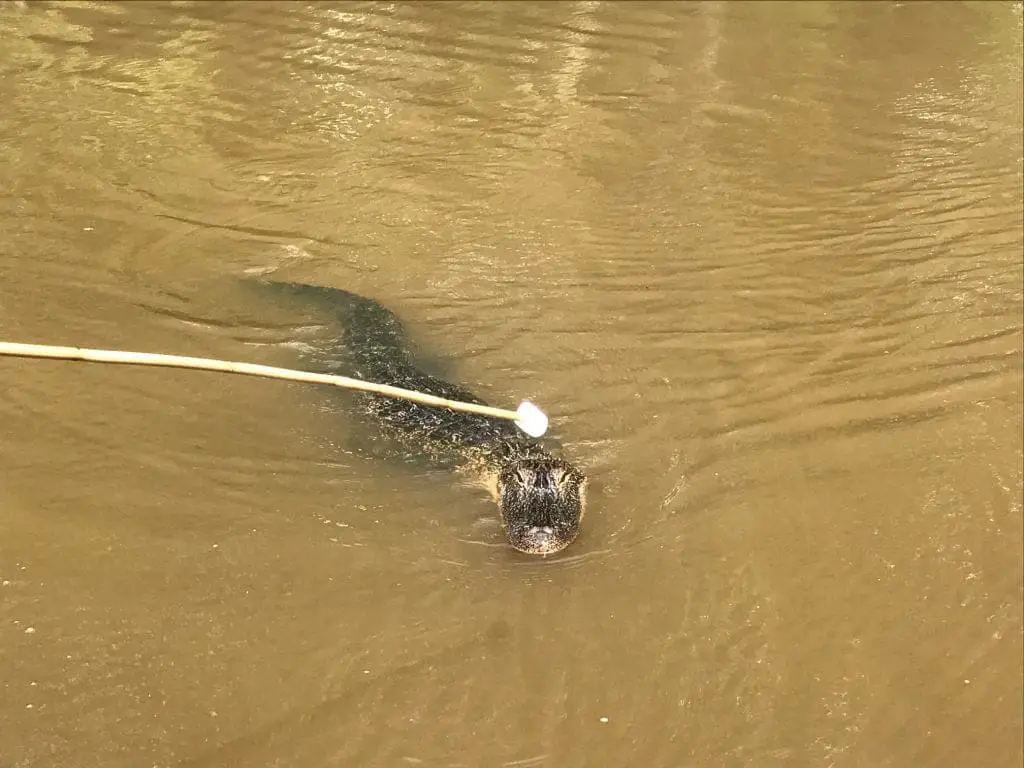
Almost there…
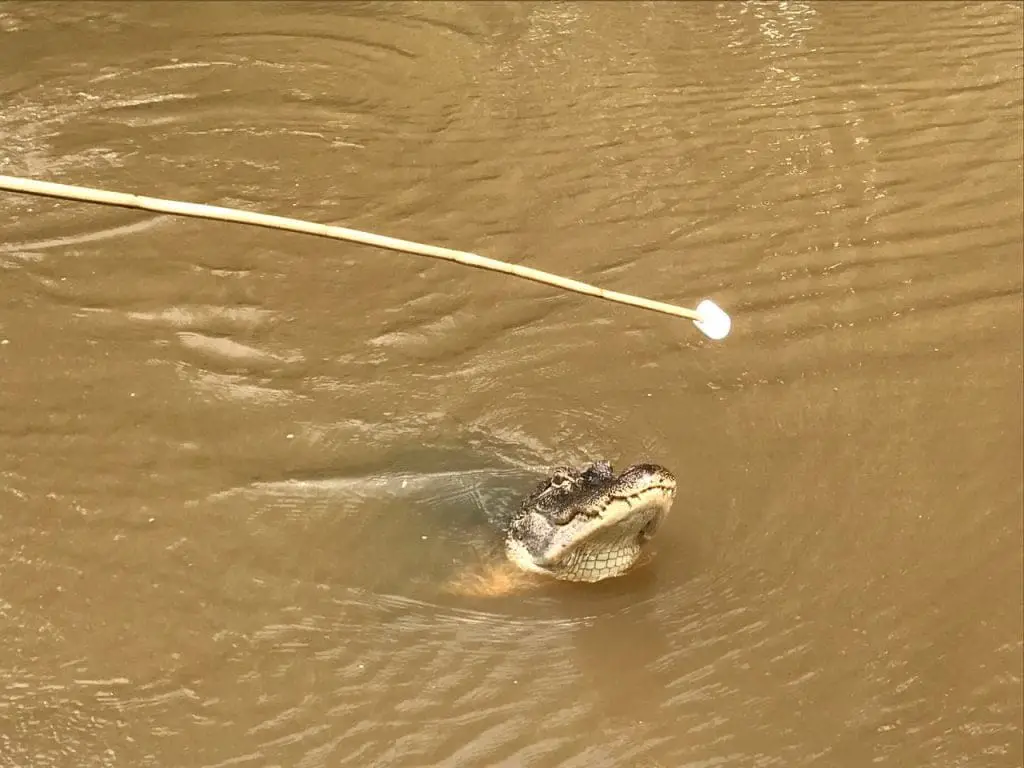
You got this buddy…
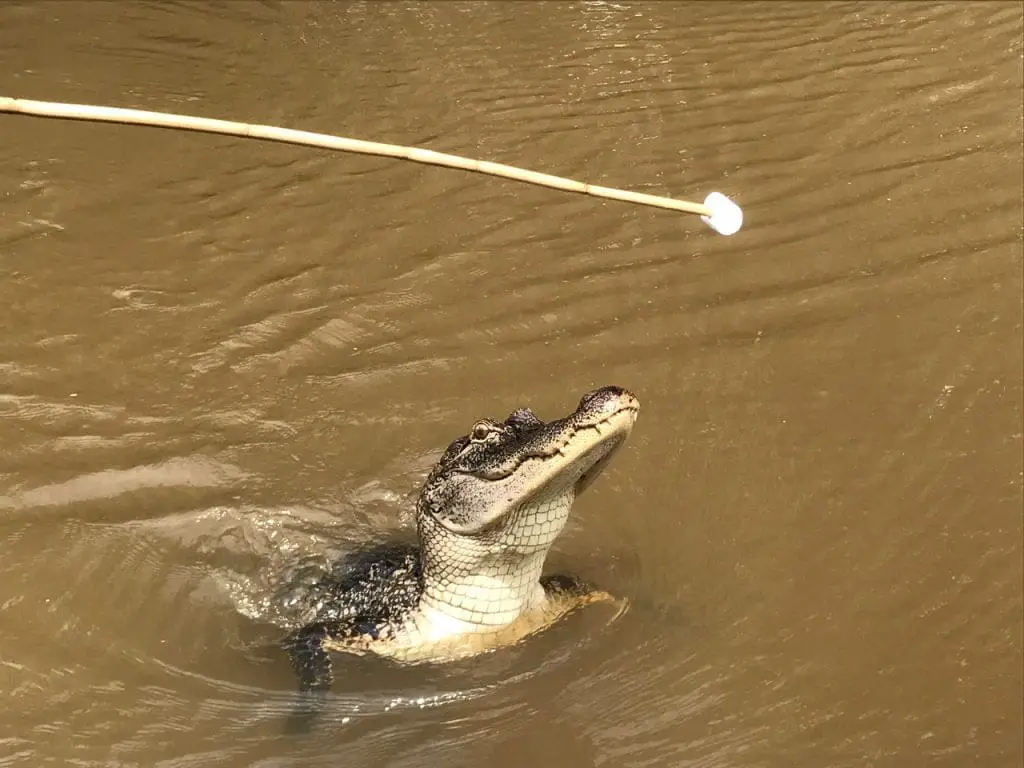
Atta boy!
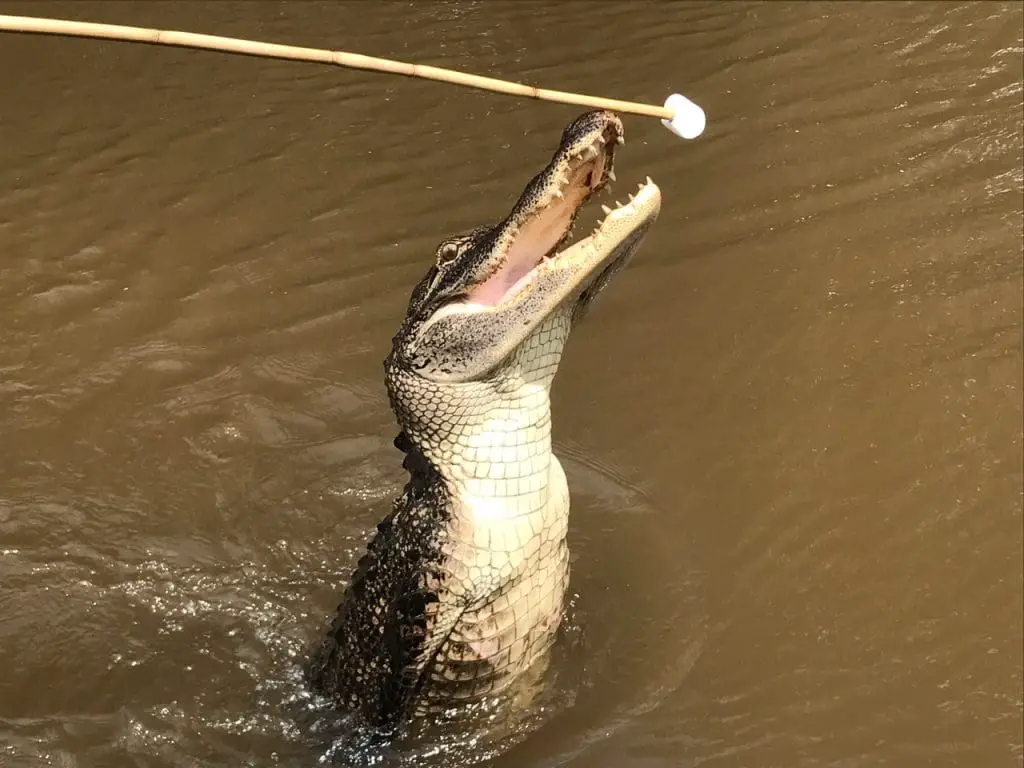
Usually, after the gators had their fill of marshmallows, they would linger around the boat (they would never attempt to jump or climb on board).
Our tour guide turns the boat around as we start heading back to our base camp.
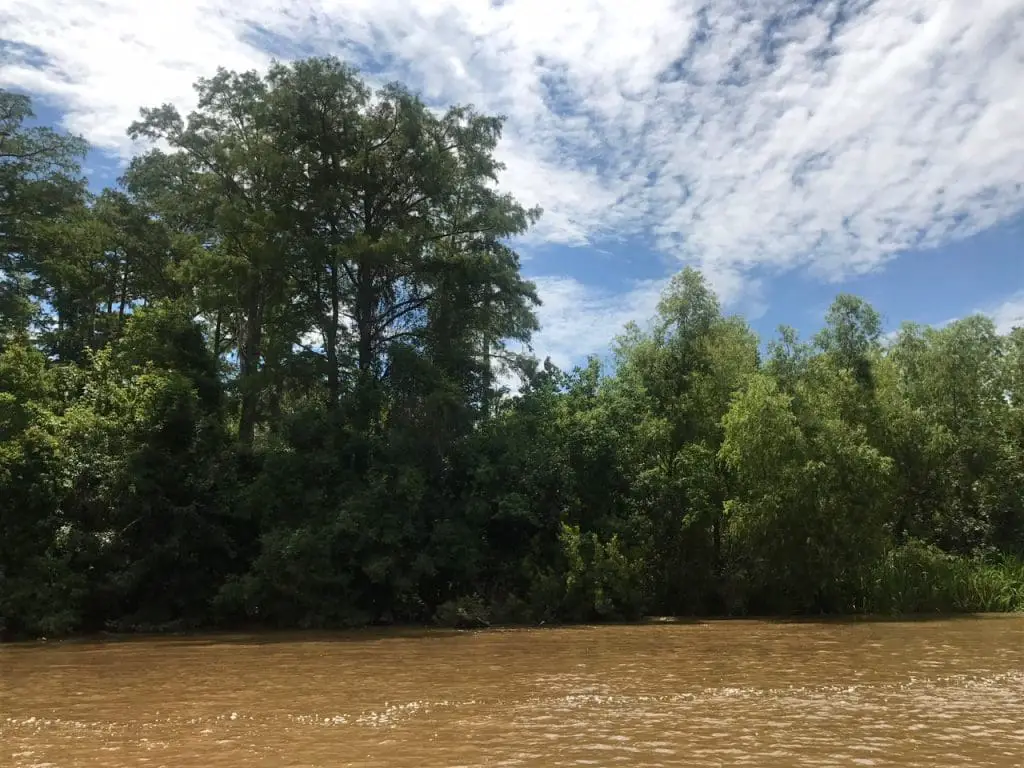
A tree just casually growing by itself in the river, which I found unique and interesting.
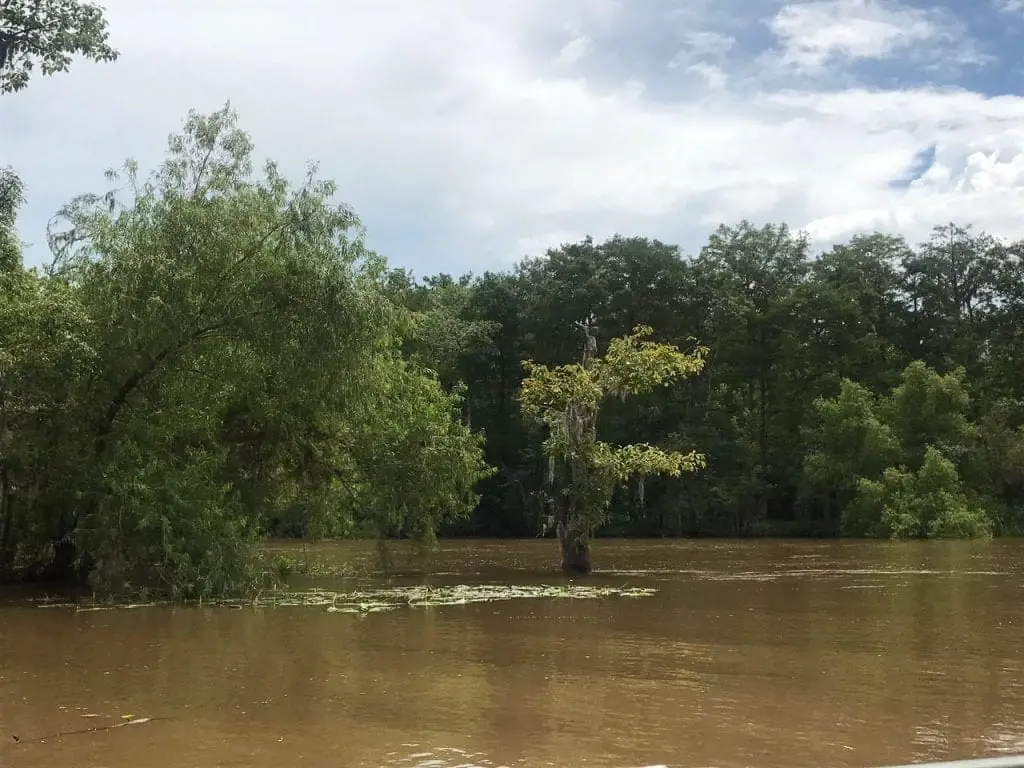
Luckily, the humidity dissipated slightly toward the early afternoon hours.
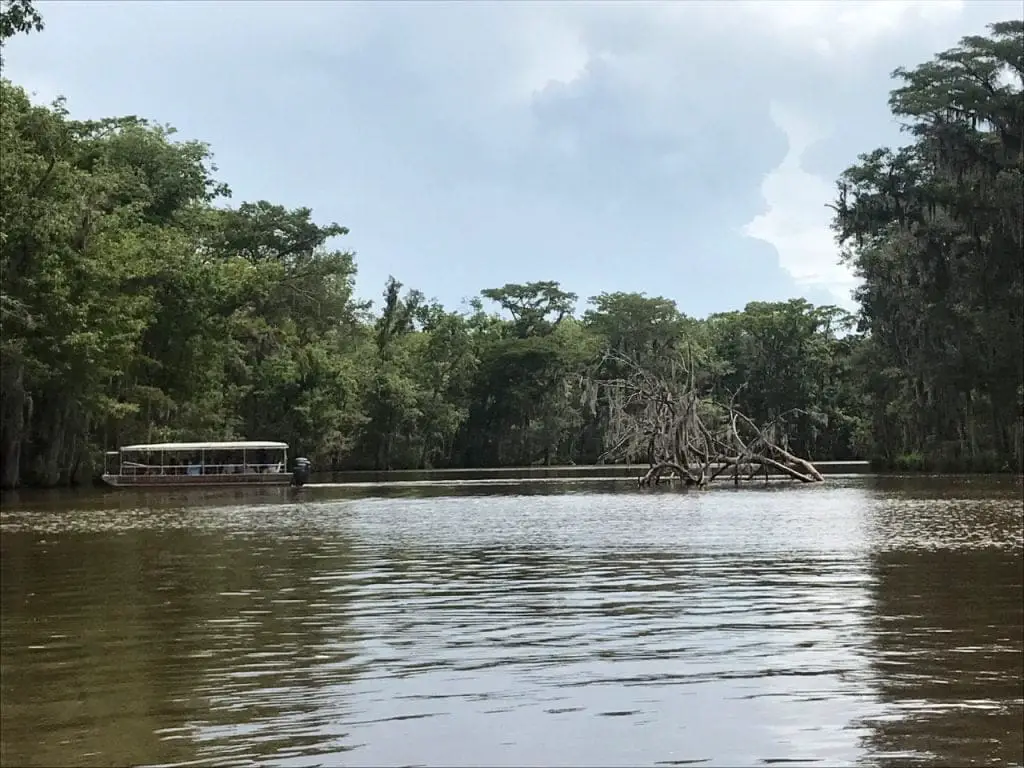
Another shack in the distance; I wonder if anyone looks after it?
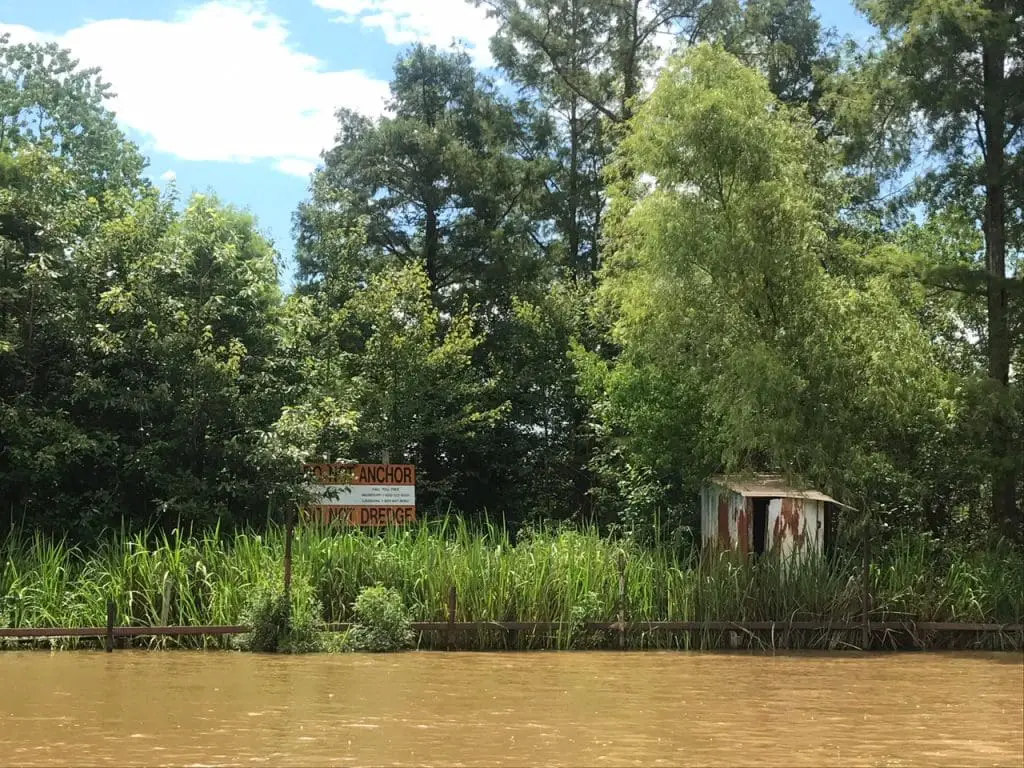
A small splash effect from the boat driving at full speed.
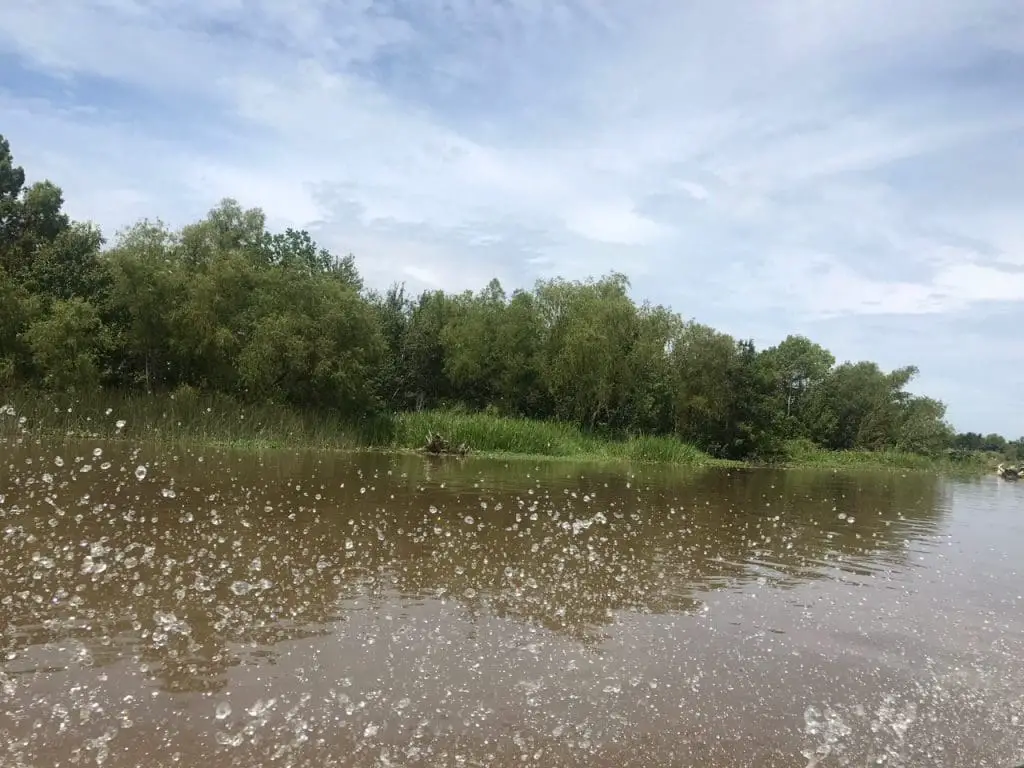
Construction in the distance; how workers have managed to haul all that equipment through the swamps is beyond me.
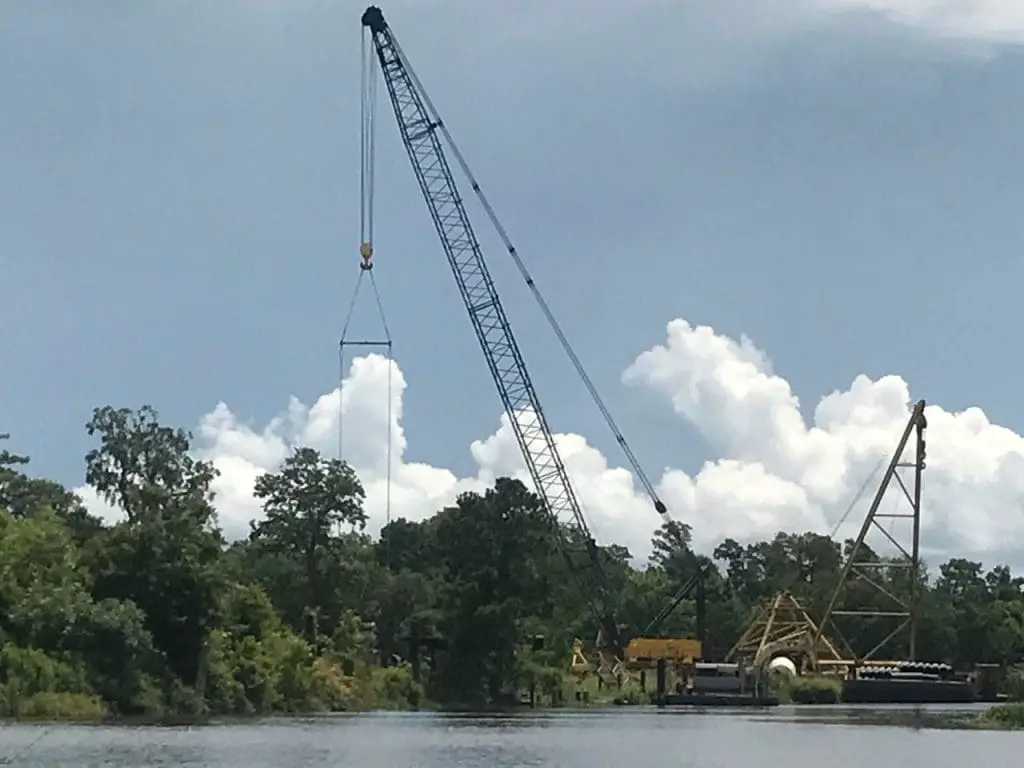
A group of 2 gators approaching our boat.
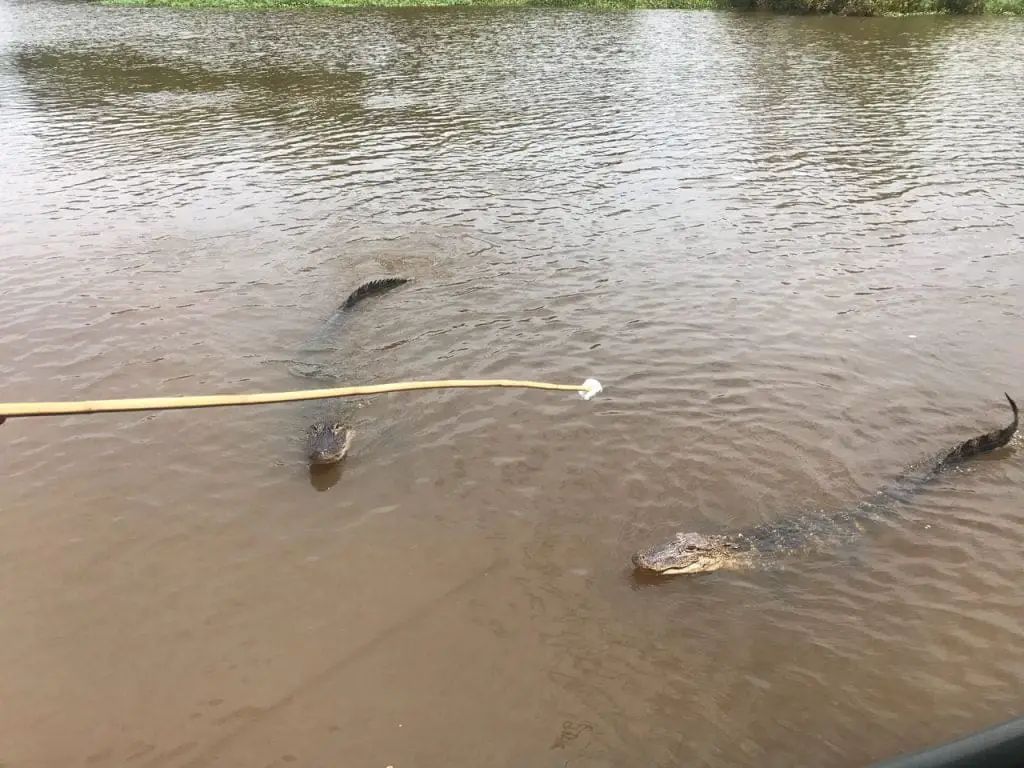
The one on my right was clearly more hungry as it quickly sprung into action.
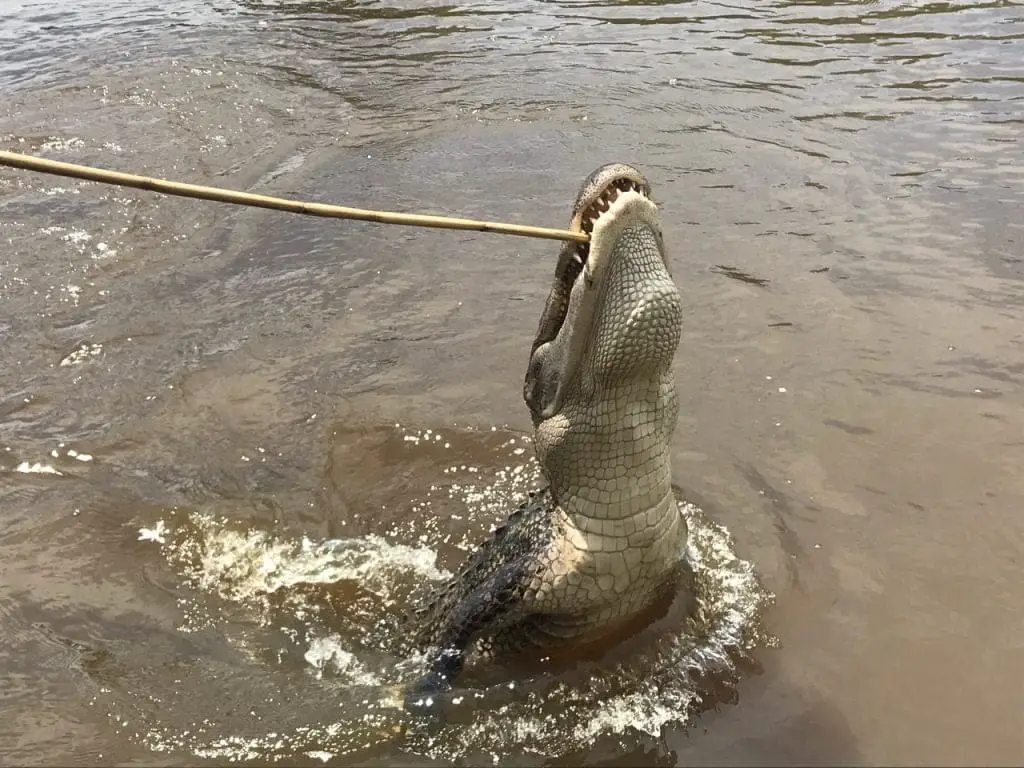
We felt bad for the gator on the left, so our tour guide was kind enough to offer it a participation marshmallow.
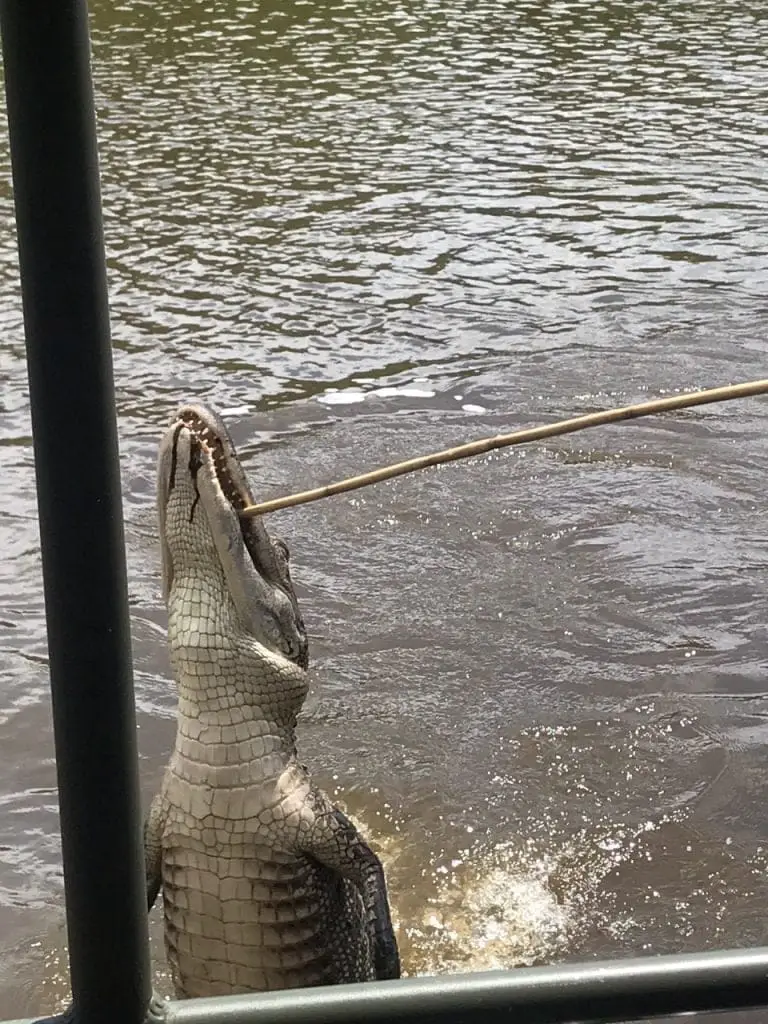
Our tour guide also mentioned the history of the Honey Island Swamp Monster. Legend has it that a man named Harlan Ford was the first person to sight the rare creature, which is described as a tall, grey “ape-gator” with yellow eyes.
He hunted the monster for the next six years, locating several four-toed footprints as well as capturing some images on his Super 8 camera. This has since been met with skepticism (what a surprise).
Here’s the Spark Notes version of how the swamp monster was “born:”
In the early 20th century, a circus train (which carried many diverse types of circus animals) crashed in the swamps. Most of these animals died on impact, all except for chimpanzees. These chimps and gators decided it would be a great idea to crossbreed and boom: the swamp monster became their ever-loving child.
While I didn’t get the chance to see the swamp monster firsthand, it’s always fun to listen to tales of far-fetched legends regarding legendary monsters.

Overall Thoughts
The entire tour lasted about 2 hours and we covered several miles of gator-filled swamps with exotic creatures roaming around the outskirts.
A few notes regarding the swamp tour:
- These are completely safe. Gators won’t try to come on board and there are railings to protect you from falling overboard. And no, you don’t get to feed or pet the gators, unless you don’t need one of your hands anymore.
- Wear light clothing. The humidity in Louisiana is quite heavy, especially in the mornings.
- You will get splashed (a little bit) when the boat drives at full speed
- You will get a personal look at some pretty cool wildlife of the swamps, so be prepared for this proximity.
Overall, this was an educational and insightful perspective on the “deep south” sector of Louisiana, where gators and crawfish rule the marshlands of Slidell.
My only regret? Not eating any gators (that’s some next level gumbo right there), but there’s always next time, right?
